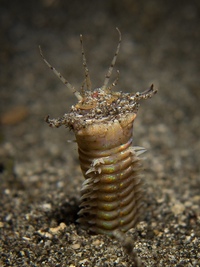Itching worm. Pinworm Infections: Symptoms, Causes, and Effective Treatments
What are pinworms and how do they cause infections. How can you recognize the symptoms of a pinworm infection. What are the most effective treatments for pinworm infections. How can you prevent pinworm infections from spreading.
Understanding Pinworms: The Tiny Parasites Causing Big Discomfort
Pinworms, scientifically known as Enterobius vermicularis, are small parasitic worms that inhabit the human intestinal tract. These minuscule creatures, measuring between 1/4 to 1/2 inch in length, are white or light gray in color. Despite their diminutive size, pinworms can cause significant discomfort and irritation, particularly in children.
The infection caused by pinworms is called enterobiasis, and it’s surprisingly common. In fact, pinworm infections affect approximately 1 billion people worldwide, making it the most prevalent worm infection in the United States. While the condition requires treatment, it rarely leads to serious medical complications.

Who is at risk for pinworm infections?
Although pinworm infections can affect individuals of all ages, certain groups are more susceptible:
- Children, especially those attending daycare centers, preschools, and elementary schools
- Caregivers and family members of infected children
- People living in institutional settings
The close proximity and shared spaces in these environments contribute to the easy spread of pinworm eggs, increasing the risk of infection.
Recognizing the Telltale Signs: Symptoms of Pinworm Infections
Identifying a pinworm infection early can lead to prompt treatment and relief. The most common symptoms include:
Anal itching: The hallmark of pinworm infections
The primary symptom of a pinworm infection is intense anal itching, particularly at night. This occurs because female pinworms emerge from the anus during nighttime hours to lay their eggs on the surrounding skin. The presence of these eggs and the movement of the worms can cause severe irritation and an irresistible urge to scratch.

Sleep disturbances and related issues
The persistent itching can significantly disrupt sleep patterns. As a result, infected individuals may experience:
- Difficulty falling asleep or staying asleep
- Decreased concentration during the day
- Fatigue and irritability
- Potential weight loss in severe cases
Additional symptoms in females
In female patients, pinworm infections can cause additional discomfort:
- Vaginal itching
- Unusual vaginal discharge
These symptoms occur when pinworms migrate from the anus to the vaginal area, causing localized irritation and inflammation.
The Lifecycle of Pinworms: Understanding Transmission and Spread
To effectively combat pinworm infections, it’s crucial to understand how these parasites spread and perpetuate their lifecycle. The transmission of pinworms follows a specific pattern:
- Egg laying: Female pinworms emerge from the anus at night to lay their microscopic eggs on the surrounding skin.
- Contamination: When an infected person scratches the affected area, eggs adhere to their fingers and under their nails.
- Spread: The eggs are then transferred to surfaces, objects, or directly to other people through touch.
- Ingestion: New infections occur when someone inadvertently ingests the eggs, often by touching their mouth after coming into contact with contaminated surfaces.
- Hatching: Once swallowed, the eggs travel through the digestive system and hatch in the intestines.
- Maturation: The newly hatched pinworms grow and mature in the intestines.
- Migration: Adult female pinworms move to the anal area to lay eggs, starting the cycle anew.
It’s important to note that pinworm eggs are incredibly resilient. They can survive for 2-3 weeks on surfaces, clothing, and bedding, making reinfection a common occurrence if proper hygiene measures are not followed.

Can pinworms spread without direct contact?
While direct contact is the most common mode of transmission, pinworms can spread through other means:
- Airborne transmission: The microscopic eggs can become airborne and be inhaled, eventually making their way to the digestive tract.
- Contaminated items: Sharing bedding, towels, or clothing with an infected person can lead to egg transfer.
- Pet fur: Although pinworms primarily infect humans, pets can carry the eggs on their fur, potentially transferring them to their owners.
Diagnosing Pinworm Infections: From Symptoms to Confirmation
If you suspect a pinworm infection, seeking medical confirmation is crucial for appropriate treatment. Healthcare providers employ several methods to diagnose enterobiasis:
The “tape test”: A simple but effective diagnostic tool
The tape test is the most common and reliable method for diagnosing pinworm infections. Here’s how it works:
- Upon waking, before using the bathroom or bathing, press a piece of clear adhesive tape against the anal area.
- The tape is then examined under a microscope to identify pinworm eggs.
- This test is typically repeated for 3 consecutive mornings to increase accuracy, as egg-laying may not occur every night.
Visual confirmation: Catching pinworms in the act
In some cases, pinworms can be directly observed:

- Adult worms may be visible around the anus 2-3 hours after the infected person falls asleep.
- They appear as small, thin, grayish-white threads, hence their alternative name “threadworms.”
- Observing and capturing these worms can provide immediate confirmation of infection.
Consultation and symptom assessment
Your healthcare provider will also consider your symptoms and risk factors when making a diagnosis. Be prepared to discuss:
- The nature and timing of your symptoms, particularly nighttime anal itching
- Potential exposure to pinworms through infected individuals or environments
- Any previous history of pinworm infections
Treating Pinworm Infections: Medications and Management Strategies
Once a pinworm infection is confirmed, prompt treatment is essential to alleviate symptoms and prevent spread. The primary approach to treating pinworm infections involves oral anti-parasitic medications.
Commonly prescribed medications for pinworm infections
Several medications are effective against pinworms:
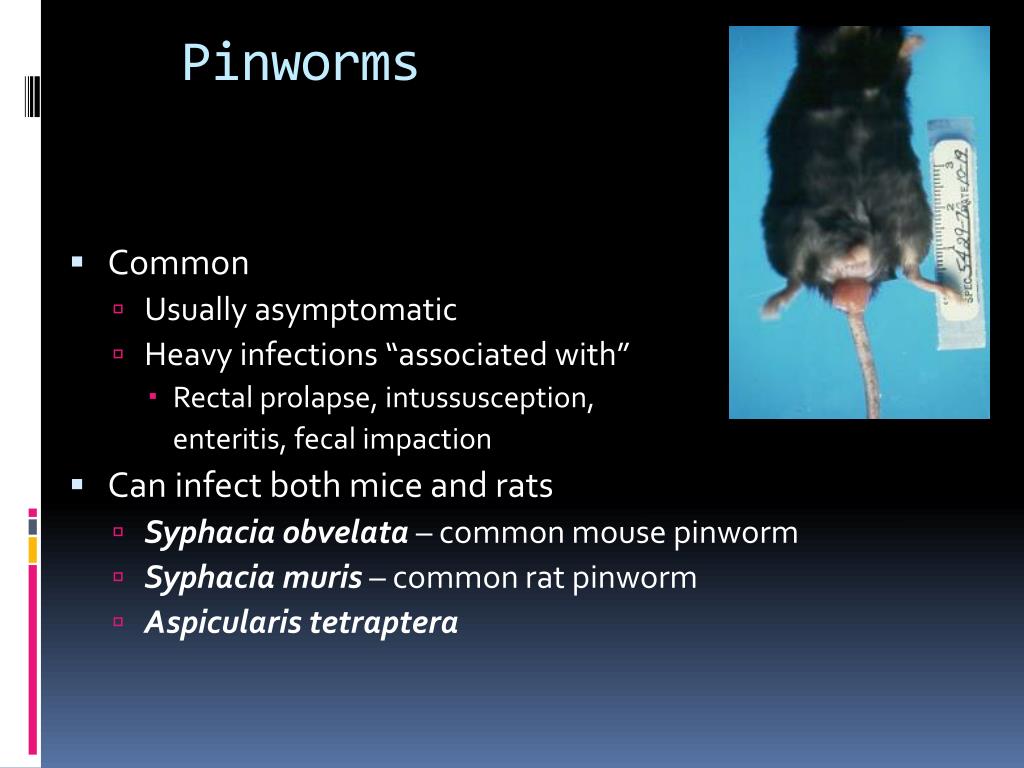
- Pyrantel pamoate: Available over-the-counter, this is the most commonly used treatment.
- Mebendazole: A prescription medication that may be used in some cases.
- Albendazole: Another prescription option, particularly for more resistant infections.
These medications work by either paralyzing the worms or disrupting their ability to absorb nutrients, leading to their elimination from the body.
Treatment protocol and considerations
To effectively eradicate pinworms, follow these guidelines:
- Take one dose of the prescribed medication immediately upon diagnosis.
- Administer a second dose two weeks later to ensure all newly hatched worms are eliminated.
- Treat all household members and close contacts simultaneously to prevent reinfection.
- Follow your healthcare provider’s instructions regarding dosage and timing.
It’s important to note that while these medications are generally safe, they may have side effects or interactions with other drugs. Always consult your healthcare provider before starting treatment, especially if you have any underlying health conditions or are taking other medications.

Beyond Medication: Comprehensive Strategies for Managing Pinworm Infections
While medication is the cornerstone of pinworm treatment, a comprehensive approach is necessary to prevent reinfection and ensure complete eradication of the parasites. Implementing the following strategies can significantly improve treatment outcomes:
Rigorous hygiene practices
Maintaining strict personal hygiene is crucial in breaking the pinworm lifecycle:
- Wash hands thoroughly with soap and warm water, especially after using the bathroom and before eating.
- Keep fingernails short and clean to minimize egg accumulation.
- Avoid nail-biting and finger-sucking, particularly in children.
- Encourage daily bathing or showering, paying special attention to the anal area.
Environmental decontamination
Pinworm eggs can survive on surfaces for several weeks, necessitating thorough cleaning of the living environment:
- Wash bedding, sleepwear, and recently worn clothing in hot water (at least 54°C or 130°F) to kill eggs.
- Vacuum carpets and upholstered furniture thoroughly, disposing of the vacuum bag in a sealed plastic bag.
- Clean and disinfect bathrooms, paying special attention to toilet seats and handles.
- Consider keeping toothbrushes in closed containers to prevent contamination.
Behavioral modifications
Certain habits can help reduce the risk of reinfection:

- Wear close-fitting underwear at night to prevent worm migration.
- Change underwear daily.
- Avoid scratching the anal area, which can lead to egg spread under fingernails.
- Discourage co-sleeping during the treatment period to minimize transmission between family members.
Preventing Pinworm Infections: Proactive Measures for Long-Term Health
While treating active pinworm infections is important, prevention is key to avoiding future occurrences. Implementing these preventive strategies can significantly reduce the risk of pinworm infections:
Education and awareness
Understanding pinworm transmission is the first step in prevention:
- Educate family members, especially children, about proper hygiene practices.
- Teach the importance of hand washing and its role in preventing pinworm spread.
- Raise awareness about the symptoms of pinworm infections to ensure early detection.
Regular health screenings
Proactive health monitoring can catch infections early:
- Consider regular pinworm screenings for children in high-risk environments, such as daycare centers or schools.
- Be vigilant about any signs of anal itching or sleep disturbances in family members.
- Consult a healthcare provider promptly if pinworm infection is suspected.
Community-wide efforts
Preventing pinworm infections often requires a collective approach:
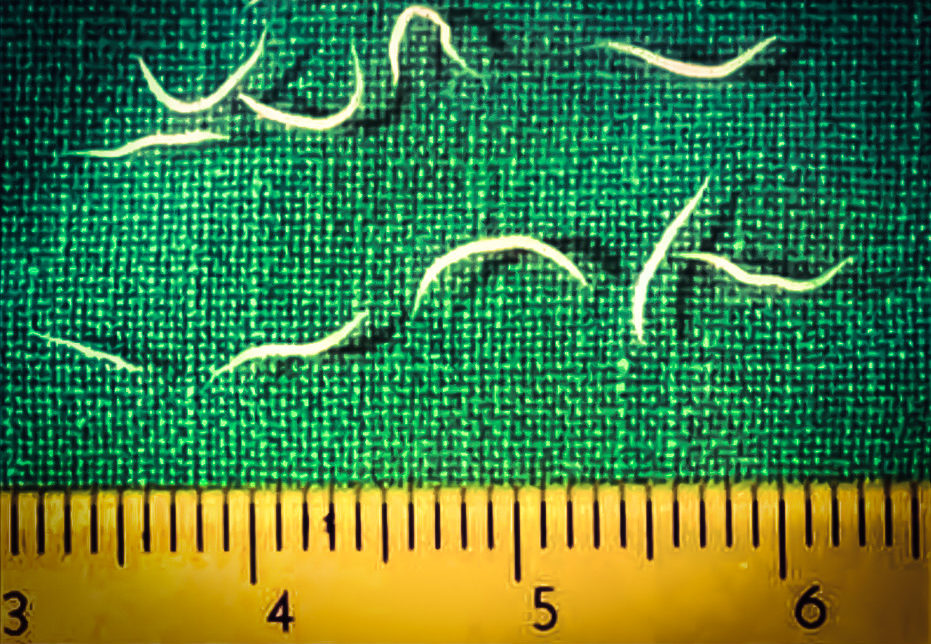
- Encourage schools and daycare centers to implement regular cleaning and hygiene protocols.
- Promote open communication about pinworm infections to reduce stigma and encourage prompt treatment.
- Support public health initiatives aimed at reducing the prevalence of parasitic infections.
Living with Pinworms: Managing Recurrent Infections and Long-Term Considerations
While pinworm infections are generally easy to treat, some individuals may experience recurrent infections or persistent symptoms. Understanding how to manage these situations is crucial for long-term health and well-being.
Dealing with recurrent infections
If pinworm infections keep recurring despite treatment, consider the following steps:
- Consult a healthcare provider to rule out any underlying conditions that might be contributing to recurrence.
- Consider extended or alternative treatment protocols under medical supervision.
- Implement more stringent hygiene and environmental cleaning measures.
- Investigate potential sources of reinfection, such as school or daycare environments.
Long-term health considerations
While pinworm infections are generally benign, chronic or recurrent infections may have some long-term effects:
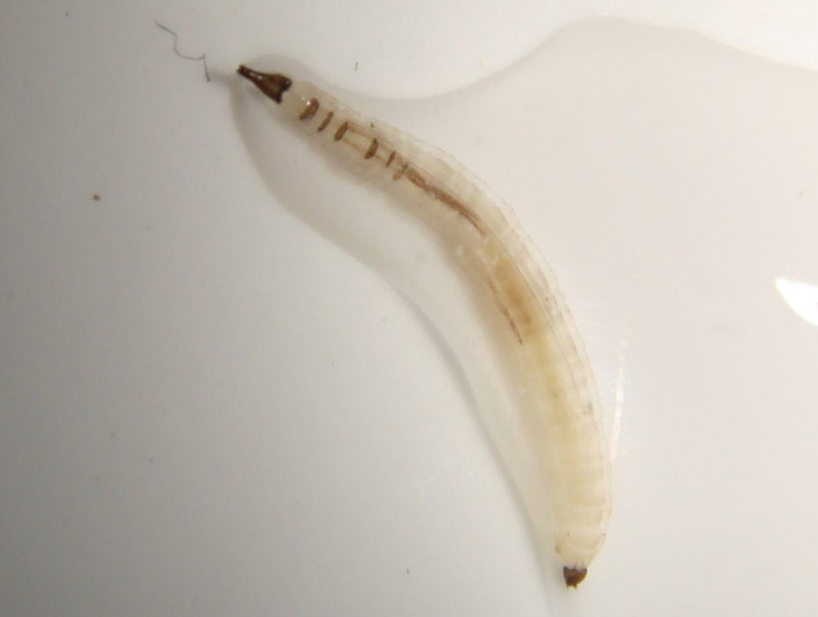
- Persistent sleep disturbances can impact overall health and cognitive function.
- Chronic anal or vaginal irritation may lead to secondary infections or skin problems.
- In rare cases, pinworms can migrate to other parts of the body, causing more severe complications.
Regular follow-ups with a healthcare provider can help monitor and address any long-term health concerns related to pinworm infections.
Psychological and social impacts
The experience of dealing with pinworm infections can have psychological and social ramifications:
- Children may feel embarrassed or stigmatized, potentially affecting their social interactions.
- Parents might experience stress or anxiety about managing recurrent infections.
- Open communication and education can help alleviate these concerns and promote a supportive environment.
By understanding the long-term aspects of living with pinworms, individuals and families can better navigate the challenges and maintain optimal health. Remember, with proper treatment, hygiene practices, and preventive measures, pinworm infections can be effectively managed and their impact minimized.
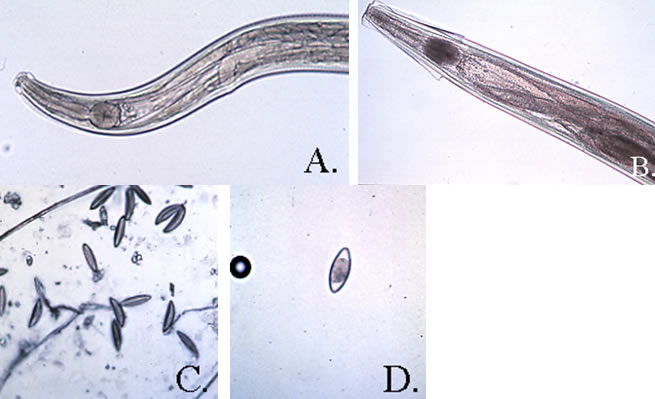
Pinworms: Symptoms, Causes, Treatments
Overview
What are pinworms?
Pinworms, also called threadworms, are parasitic worms that live in the intestines and rectums of infected people. Pinworms are small and thin (about ¼ inch to ½ inch long), and white or light gray.
What is a pinworm infection?
The pinworm infection is called enterobiasis. It is the most common type of worm infection in the United States. Although a pinworm infection does need to be treated, it usually doesn’t cause any serious medical problems.
Pinworm infections are very common, affecting approximately 1 billion people worldwide.
People of all ages can become infected with pinworms, but the infections are found most often in children. Caregivers and family members of infected children have a higher risk of infection.
Day care centers, preschools, and schools are often the source of a pinworm infection. People who live in institutions are also commonly affected by pinworms.
Symptoms and Causes
What are the symptoms of pinworm infections?
Symptoms of a pinworm infection (enterobiasis) include:
- Anal itching, especially at night: Pinworms lay their eggs around the anus at night, causing itching and irritation. While symptoms are usually mild, anal itching can be severe.
- Sleeplessness: Because anal itching is worse at night, people suffering from a pinworm infection can have trouble sleeping, which can lead to decreased concentration, tiredness and weight loss.
- Vaginal itching: In females, symptoms can also include vaginal discharge (seepage) and itching in the vaginal area.
How do people get pinworms?
Pinworm infection occurs when someone swallows pinworm eggs, usually in the following manner:
- Pinworms lay their eggs on the skin around the anus of an infected person.
- When that person touches or scratches his or her anus, the eggs stick to the fingers and fingernails.

- The eggs are then transferred to surfaces and to other people, who swallow them when they touch their mouths.
- The eggs travel through the digestive system of the infected person and hatch in the intestines.
- Once hatched, the female pinworms make their way to the anus to lay their eggs.
Pinworm eggs can survive for 2-3 weeks on fingers, under fingernails, and on surfaces such as linens, clothing or toilet seats. The tiny eggs can only be seen under a microscope.
Can you get pinworms without being around an infected person?
Yes. A pinworm infection can also be spread through:
- Bed sheets and undergarments: Eggs can spread through contact with contaminated sheets, towels or underwear of infected people.
- Inhalation: Because the eggs are so tiny, they can travel through the air and inhaled. Once inhaled, they travel through the digestive tract, hatch and lay their own eggs.
- Dogs and cats: While pinworms are usually transmitted from human to human, dogs and cats can carry the eggs on their fur and transfer them to humans.

Diagnosis and Tests
How are pinworms infections diagnosed?
If you or your child has anal itching that is worse at night, it’s important to see a doctor. Your doctor will ask about your symptoms, especially anal itching at night. In addition, the doctor may ask you to collect the pinworm eggs using the “tape test.” To do this:
- Place a clear piece of tape over the anal area as soon as the infected person wakes up in the morning. The eggs will stick to the tape.
- Take the tape to the doctor, following your doctor’s directions. The eggs will be examined under a microscope.
It’s best to do the tape test as soon as the person wakes up, before bathing or using the bathroom. You should do the tape test a few times to get the most accurate results.
Another way to confirm a diagnosis is to see the pinworms. While the infected person is sleeping, mature pinworms make their way out of the rectum to lay their eggs around the anal opening.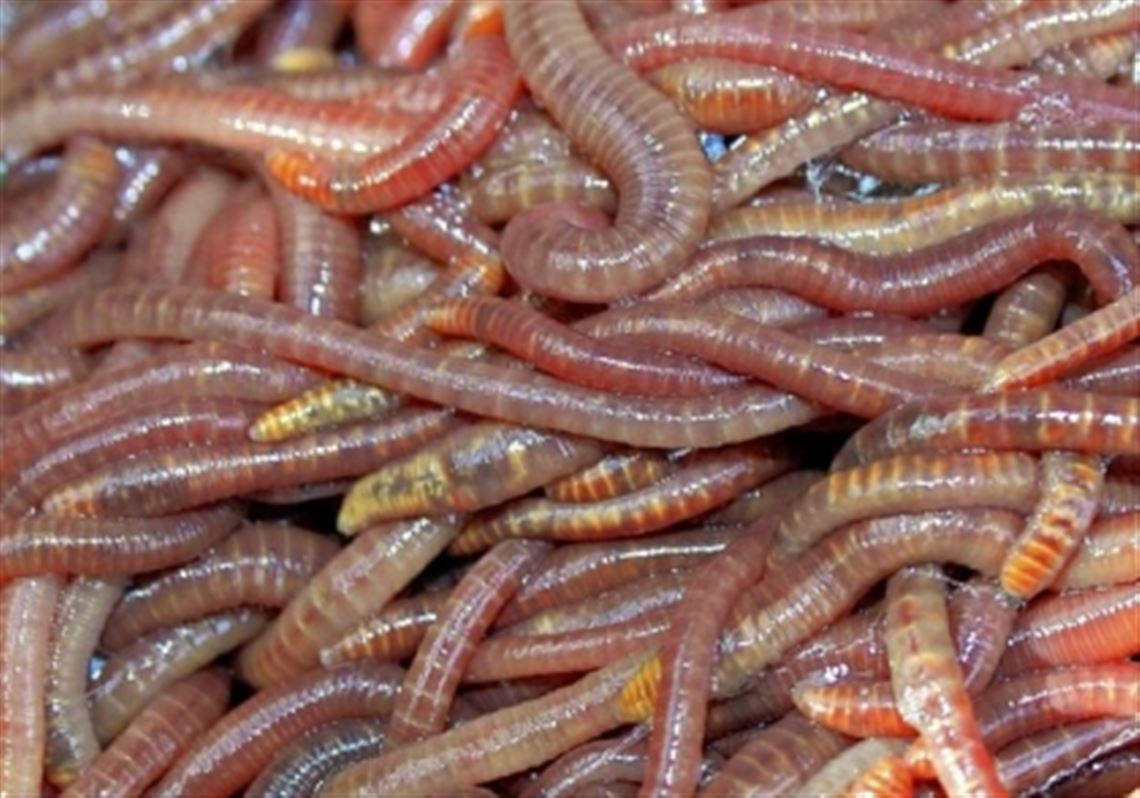
Small, thin, grayish-white worms may be visible around the anus two-three hours after the person falls asleep. The worms look like little pieces of thread, which is why they are sometimes called threadworm. You can capture the worms using clear tape or let your doctor know that you saw them.
Management and Treatment
How are pinworms treated?
Pinworms are treated with an oral (taken by mouth) anti-parasitic medication that kills the worms. You will need to take one dose right away and another dose two weeks later to make sure all the worms are gone. To reduce the risk of re-infection, pediatricians recommend that the family members and caregivers of an infected child be treated, as well.
The medications used to treat pinworms are:
- Pyrantel pamoate
- Mebendazole
- Albendazole
Pyrantel pamoate is the medication most commonly used to treat pinworms. It is available without a prescription (over-the-counter).
What are the side effects of treatment for pinworms?
Before using pyrantel pamoate, you should consult your doctor if you are pregnant or if the infected child is younger than 2 years old.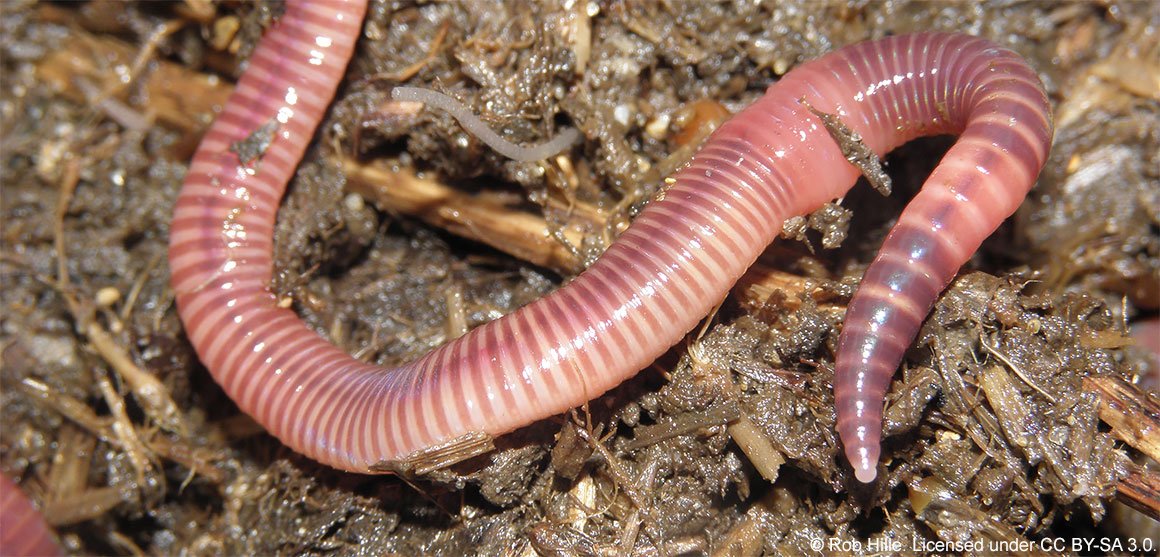 Side effects of pyrantel pamoate include:
Side effects of pyrantel pamoate include:
For all three medications, side effects include gastrointestinal upset.
What are the complications associated with pinworms?
While serious complications are rare, pinworms can lead to:
- Bacterial infections: When the infected person scratches the anal area, the skin can bleed and become infected.
- Urinary tract infections (UTIs): In females, the worms can travel to the vagina and cause infections.
- Gastrointestinal and abdominal problems: In rare cases, pinworms have been linked to appendicitis, diverticulitis (the growth of pouches in the large intestine), and inflammation of the vagina and the lining of the uterus.
What can I do to help relieve the symptoms of pinworm infections?
To relieve the itching, you can:
- Wash the anal area with warm water and soap.
- Use a 1% hydrocortisone cream on the skin around the anus.

- Avoid scratching the area.
Prevention
How can I prevent pinworm infections?
The most effective way to prevent a pinworm infection is by practicing cleanliness in the following ways:
- Wash your hands often: Using soap and warm water, wash your hands after using the bathroom, changing a diaper, before handling food or touching your mouth or nose, and after petting a dog or cat. Make sure your children wash their hands, too.
- Keep surfaces clean: Clean toys, counters, toilets, utensils, dishes and other surfaces frequently with soap and water to lower the risk of spreading the infection.
- Shower often: People who have pinworms should shower every day to remove some of the eggs from the skin. Showering is more effective than bathing because bathwater can become contaminated with eggs. People who have pinworms should not bathe with others until the infection is gone.
- Trim your fingernails: To avoid transferring the eggs, keep your fingernails clean and trimmed.

- Avoid touching the anal area: Make sure children do not touch or scratch the affected area.
- Wash sheets, towels and underclothes frequently: Wash linens every day until the treatment is complete. Be careful not to shake out the laundry before washing since eggs can scatter and spread infection.
Outlook / Prognosis
What is the prognosis (outlook) for patients who have pinworms?
With proper treatment, pinworms don’t cause long-term health problems. Children or families can have pinworm infections several times. If the symptoms return after treatment, you should go back to your doctor.
Living With
When should I call my doctor about pinworms?
If you or your child has anal itching that is worse at night, you should contact your doctor or your child’s pediatrician.
Pinworms: Symptoms, Causes, Treatments
Overview
What are pinworms?
Pinworms, also called threadworms, are parasitic worms that live in the intestines and rectums of infected people. Pinworms are small and thin (about ¼ inch to ½ inch long), and white or light gray.
Pinworms are small and thin (about ¼ inch to ½ inch long), and white or light gray.
What is a pinworm infection?
The pinworm infection is called enterobiasis. It is the most common type of worm infection in the United States. Although a pinworm infection does need to be treated, it usually doesn’t cause any serious medical problems.
Pinworm infections are very common, affecting approximately 1 billion people worldwide.
People of all ages can become infected with pinworms, but the infections are found most often in children. Caregivers and family members of infected children have a higher risk of infection.
Day care centers, preschools, and schools are often the source of a pinworm infection. People who live in institutions are also commonly affected by pinworms.
Symptoms and Causes
What are the symptoms of pinworm infections?
Symptoms of a pinworm infection (enterobiasis) include:
- Anal itching, especially at night: Pinworms lay their eggs around the anus at night, causing itching and irritation.
 While symptoms are usually mild, anal itching can be severe.
While symptoms are usually mild, anal itching can be severe. - Sleeplessness: Because anal itching is worse at night, people suffering from a pinworm infection can have trouble sleeping, which can lead to decreased concentration, tiredness and weight loss.
- Vaginal itching: In females, symptoms can also include vaginal discharge (seepage) and itching in the vaginal area.
How do people get pinworms?
Pinworm infection occurs when someone swallows pinworm eggs, usually in the following manner:
- Pinworms lay their eggs on the skin around the anus of an infected person.
- When that person touches or scratches his or her anus, the eggs stick to the fingers and fingernails.
- The eggs are then transferred to surfaces and to other people, who swallow them when they touch their mouths.
- The eggs travel through the digestive system of the infected person and hatch in the intestines.
- Once hatched, the female pinworms make their way to the anus to lay their eggs.

Pinworm eggs can survive for 2-3 weeks on fingers, under fingernails, and on surfaces such as linens, clothing or toilet seats. The tiny eggs can only be seen under a microscope.
Can you get pinworms without being around an infected person?
Yes. A pinworm infection can also be spread through:
- Bed sheets and undergarments: Eggs can spread through contact with contaminated sheets, towels or underwear of infected people.
- Inhalation: Because the eggs are so tiny, they can travel through the air and inhaled. Once inhaled, they travel through the digestive tract, hatch and lay their own eggs.
- Dogs and cats: While pinworms are usually transmitted from human to human, dogs and cats can carry the eggs on their fur and transfer them to humans.
Diagnosis and Tests
How are pinworms infections diagnosed?
If you or your child has anal itching that is worse at night, it’s important to see a doctor. Your doctor will ask about your symptoms, especially anal itching at night. In addition, the doctor may ask you to collect the pinworm eggs using the “tape test.” To do this:
Your doctor will ask about your symptoms, especially anal itching at night. In addition, the doctor may ask you to collect the pinworm eggs using the “tape test.” To do this:
- Place a clear piece of tape over the anal area as soon as the infected person wakes up in the morning. The eggs will stick to the tape.
- Take the tape to the doctor, following your doctor’s directions. The eggs will be examined under a microscope.
It’s best to do the tape test as soon as the person wakes up, before bathing or using the bathroom. You should do the tape test a few times to get the most accurate results.
Another way to confirm a diagnosis is to see the pinworms. While the infected person is sleeping, mature pinworms make their way out of the rectum to lay their eggs around the anal opening.
Small, thin, grayish-white worms may be visible around the anus two-three hours after the person falls asleep. The worms look like little pieces of thread, which is why they are sometimes called threadworm. You can capture the worms using clear tape or let your doctor know that you saw them.
You can capture the worms using clear tape or let your doctor know that you saw them.
Management and Treatment
How are pinworms treated?
Pinworms are treated with an oral (taken by mouth) anti-parasitic medication that kills the worms. You will need to take one dose right away and another dose two weeks later to make sure all the worms are gone. To reduce the risk of re-infection, pediatricians recommend that the family members and caregivers of an infected child be treated, as well.
The medications used to treat pinworms are:
- Pyrantel pamoate
- Mebendazole
- Albendazole
Pyrantel pamoate is the medication most commonly used to treat pinworms. It is available without a prescription (over-the-counter).
What are the side effects of treatment for pinworms?
Before using pyrantel pamoate, you should consult your doctor if you are pregnant or if the infected child is younger than 2 years old. Side effects of pyrantel pamoate include:
For all three medications, side effects include gastrointestinal upset.
What are the complications associated with pinworms?
While serious complications are rare, pinworms can lead to:
- Bacterial infections: When the infected person scratches the anal area, the skin can bleed and become infected.
- Urinary tract infections (UTIs): In females, the worms can travel to the vagina and cause infections.
- Gastrointestinal and abdominal problems: In rare cases, pinworms have been linked to appendicitis, diverticulitis (the growth of pouches in the large intestine), and inflammation of the vagina and the lining of the uterus.
What can I do to help relieve the symptoms of pinworm infections?
To relieve the itching, you can:
- Wash the anal area with warm water and soap.
- Use a 1% hydrocortisone cream on the skin around the anus.
- Avoid scratching the area.
Prevention
How can I prevent pinworm infections?
The most effective way to prevent a pinworm infection is by practicing cleanliness in the following ways:
- Wash your hands often: Using soap and warm water, wash your hands after using the bathroom, changing a diaper, before handling food or touching your mouth or nose, and after petting a dog or cat.
 Make sure your children wash their hands, too.
Make sure your children wash their hands, too. - Keep surfaces clean: Clean toys, counters, toilets, utensils, dishes and other surfaces frequently with soap and water to lower the risk of spreading the infection.
- Shower often: People who have pinworms should shower every day to remove some of the eggs from the skin. Showering is more effective than bathing because bathwater can become contaminated with eggs. People who have pinworms should not bathe with others until the infection is gone.
- Trim your fingernails: To avoid transferring the eggs, keep your fingernails clean and trimmed.
- Avoid touching the anal area: Make sure children do not touch or scratch the affected area.
- Wash sheets, towels and underclothes frequently: Wash linens every day until the treatment is complete. Be careful not to shake out the laundry before washing since eggs can scatter and spread infection.

Outlook / Prognosis
What is the prognosis (outlook) for patients who have pinworms?
With proper treatment, pinworms don’t cause long-term health problems. Children or families can have pinworm infections several times. If the symptoms return after treatment, you should go back to your doctor.
Living With
When should I call my doctor about pinworms?
If you or your child has anal itching that is worse at night, you should contact your doctor or your child’s pediatrician.
Pinworms: Symptoms, Causes, Treatments
Overview
What are pinworms?
Pinworms, also called threadworms, are parasitic worms that live in the intestines and rectums of infected people. Pinworms are small and thin (about ¼ inch to ½ inch long), and white or light gray.
What is a pinworm infection?
The pinworm infection is called enterobiasis. It is the most common type of worm infection in the United States./causes-and-treatment-of-anal-itching-289464_color2-5c12c095c9e77c0001f95b42.png) Although a pinworm infection does need to be treated, it usually doesn’t cause any serious medical problems.
Although a pinworm infection does need to be treated, it usually doesn’t cause any serious medical problems.
Pinworm infections are very common, affecting approximately 1 billion people worldwide.
People of all ages can become infected with pinworms, but the infections are found most often in children. Caregivers and family members of infected children have a higher risk of infection.
Day care centers, preschools, and schools are often the source of a pinworm infection. People who live in institutions are also commonly affected by pinworms.
Symptoms and Causes
What are the symptoms of pinworm infections?
Symptoms of a pinworm infection (enterobiasis) include:
- Anal itching, especially at night: Pinworms lay their eggs around the anus at night, causing itching and irritation. While symptoms are usually mild, anal itching can be severe.
- Sleeplessness: Because anal itching is worse at night, people suffering from a pinworm infection can have trouble sleeping, which can lead to decreased concentration, tiredness and weight loss.

- Vaginal itching: In females, symptoms can also include vaginal discharge (seepage) and itching in the vaginal area.
How do people get pinworms?
Pinworm infection occurs when someone swallows pinworm eggs, usually in the following manner:
- Pinworms lay their eggs on the skin around the anus of an infected person.
- When that person touches or scratches his or her anus, the eggs stick to the fingers and fingernails.
- The eggs are then transferred to surfaces and to other people, who swallow them when they touch their mouths.
- The eggs travel through the digestive system of the infected person and hatch in the intestines.
- Once hatched, the female pinworms make their way to the anus to lay their eggs.
Pinworm eggs can survive for 2-3 weeks on fingers, under fingernails, and on surfaces such as linens, clothing or toilet seats. The tiny eggs can only be seen under a microscope.
Can you get pinworms without being around an infected person?
Yes.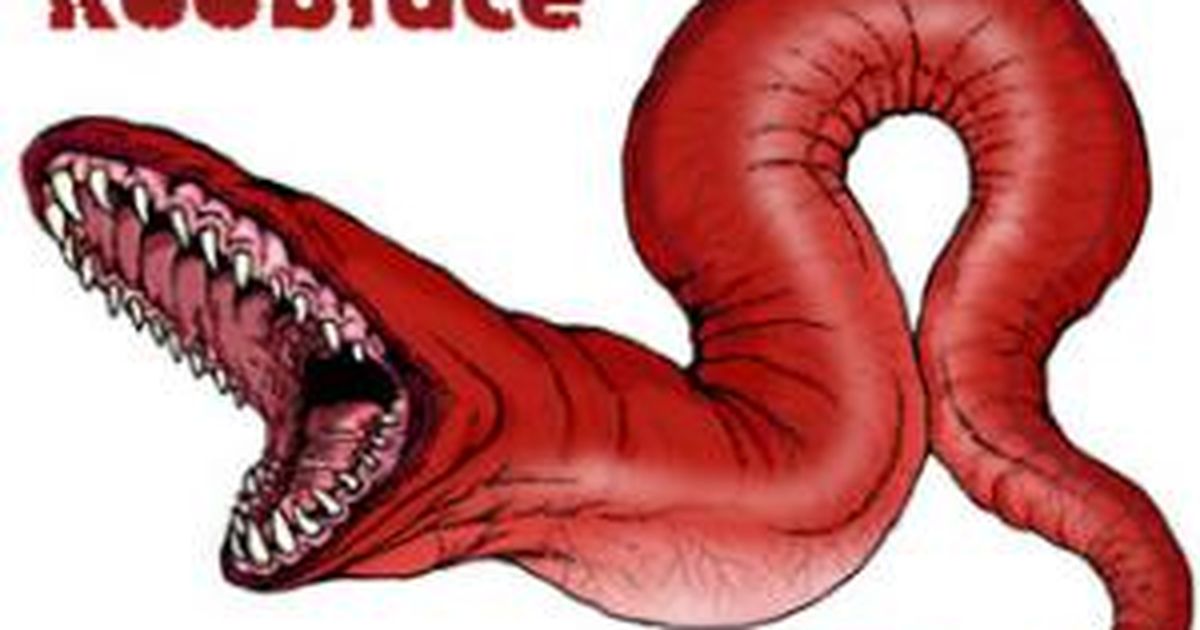 A pinworm infection can also be spread through:
A pinworm infection can also be spread through:
- Bed sheets and undergarments: Eggs can spread through contact with contaminated sheets, towels or underwear of infected people.
- Inhalation: Because the eggs are so tiny, they can travel through the air and inhaled. Once inhaled, they travel through the digestive tract, hatch and lay their own eggs.
- Dogs and cats: While pinworms are usually transmitted from human to human, dogs and cats can carry the eggs on their fur and transfer them to humans.
Diagnosis and Tests
How are pinworms infections diagnosed?
If you or your child has anal itching that is worse at night, it’s important to see a doctor. Your doctor will ask about your symptoms, especially anal itching at night. In addition, the doctor may ask you to collect the pinworm eggs using the “tape test.” To do this:
- Place a clear piece of tape over the anal area as soon as the infected person wakes up in the morning.
 The eggs will stick to the tape.
The eggs will stick to the tape. - Take the tape to the doctor, following your doctor’s directions. The eggs will be examined under a microscope.
It’s best to do the tape test as soon as the person wakes up, before bathing or using the bathroom. You should do the tape test a few times to get the most accurate results.
Another way to confirm a diagnosis is to see the pinworms. While the infected person is sleeping, mature pinworms make their way out of the rectum to lay their eggs around the anal opening.
Small, thin, grayish-white worms may be visible around the anus two-three hours after the person falls asleep. The worms look like little pieces of thread, which is why they are sometimes called threadworm. You can capture the worms using clear tape or let your doctor know that you saw them.
Management and Treatment
How are pinworms treated?
Pinworms are treated with an oral (taken by mouth) anti-parasitic medication that kills the worms.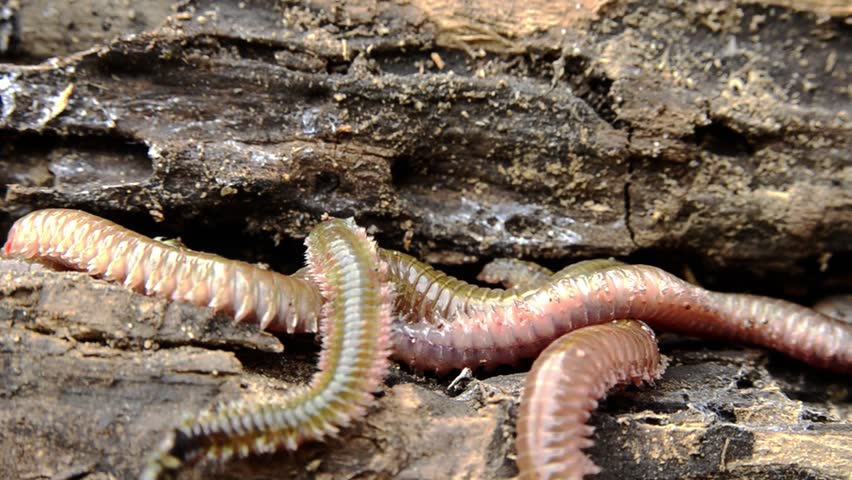 You will need to take one dose right away and another dose two weeks later to make sure all the worms are gone. To reduce the risk of re-infection, pediatricians recommend that the family members and caregivers of an infected child be treated, as well.
You will need to take one dose right away and another dose two weeks later to make sure all the worms are gone. To reduce the risk of re-infection, pediatricians recommend that the family members and caregivers of an infected child be treated, as well.
The medications used to treat pinworms are:
- Pyrantel pamoate
- Mebendazole
- Albendazole
Pyrantel pamoate is the medication most commonly used to treat pinworms. It is available without a prescription (over-the-counter).
What are the side effects of treatment for pinworms?
Before using pyrantel pamoate, you should consult your doctor if you are pregnant or if the infected child is younger than 2 years old. Side effects of pyrantel pamoate include:
For all three medications, side effects include gastrointestinal upset.
What are the complications associated with pinworms?
While serious complications are rare, pinworms can lead to:
- Bacterial infections: When the infected person scratches the anal area, the skin can bleed and become infected.

- Urinary tract infections (UTIs): In females, the worms can travel to the vagina and cause infections.
- Gastrointestinal and abdominal problems: In rare cases, pinworms have been linked to appendicitis, diverticulitis (the growth of pouches in the large intestine), and inflammation of the vagina and the lining of the uterus.
What can I do to help relieve the symptoms of pinworm infections?
To relieve the itching, you can:
- Wash the anal area with warm water and soap.
- Use a 1% hydrocortisone cream on the skin around the anus.
- Avoid scratching the area.
Prevention
How can I prevent pinworm infections?
The most effective way to prevent a pinworm infection is by practicing cleanliness in the following ways:
- Wash your hands often: Using soap and warm water, wash your hands after using the bathroom, changing a diaper, before handling food or touching your mouth or nose, and after petting a dog or cat.
 Make sure your children wash their hands, too.
Make sure your children wash their hands, too. - Keep surfaces clean: Clean toys, counters, toilets, utensils, dishes and other surfaces frequently with soap and water to lower the risk of spreading the infection.
- Shower often: People who have pinworms should shower every day to remove some of the eggs from the skin. Showering is more effective than bathing because bathwater can become contaminated with eggs. People who have pinworms should not bathe with others until the infection is gone.
- Trim your fingernails: To avoid transferring the eggs, keep your fingernails clean and trimmed.
- Avoid touching the anal area: Make sure children do not touch or scratch the affected area.
- Wash sheets, towels and underclothes frequently: Wash linens every day until the treatment is complete. Be careful not to shake out the laundry before washing since eggs can scatter and spread infection.

Outlook / Prognosis
What is the prognosis (outlook) for patients who have pinworms?
With proper treatment, pinworms don’t cause long-term health problems. Children or families can have pinworm infections several times. If the symptoms return after treatment, you should go back to your doctor.
Living With
When should I call my doctor about pinworms?
If you or your child has anal itching that is worse at night, you should contact your doctor or your child’s pediatrician.
Creeping Eruption | Johns Hopkins Medicine
What is creeping eruption?
Creeping eruption is a skin infection caused by hookworms. The infection is also called cutaneous larva migrans or sandworm disease.
Creeping eruption causes severe itching, blisters, and a red growing, winding rash. The rash can grow up to 1 to 2 centimeters per day. The infection usually appears on areas of the body that have been exposed to the contaminated ground.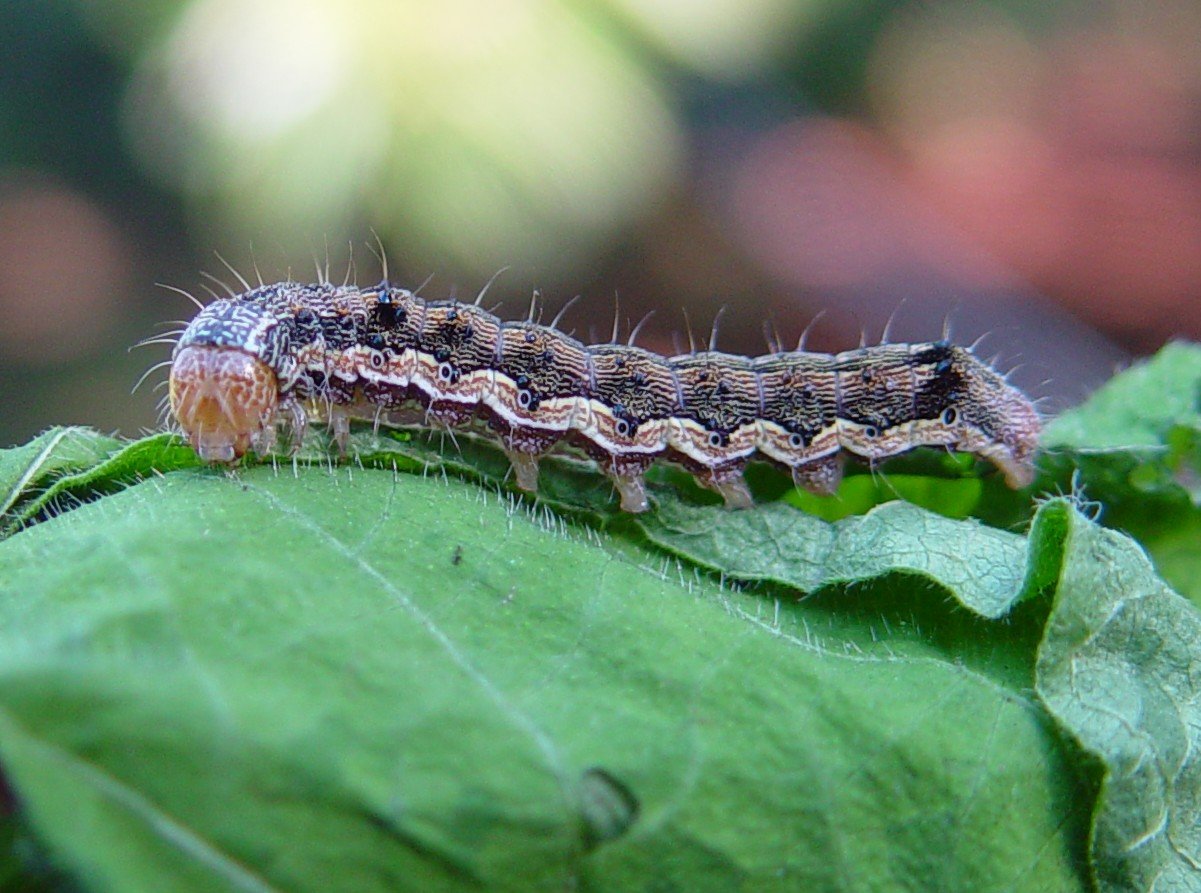 These include the feet, legs, buttocks, or back.
These include the feet, legs, buttocks, or back.
What causes creeping eruption?
Creeping eruption is caused by hookworms. Hookworm eggs are found in the feces of dogs and cats. After the eggs hatch, they mature into worms. The infection can be spread to people from skin contact with the worms in the feces. Hookworms may be found in moist, sandy areas. Walking barefoot on contaminated grounds in warm climates is how most people get this condition.
What are the symptoms of creeping eruption?
The rash usually shows up 1 to 5 days after you have been exposed to the hookworms. But sometimes it can take more than 1 month to show up. Each person may have slightly different symptoms. Symptoms may include:
- Winding, snake-like rash. This is because the hookworm burrows along a path that creates a winding rash.
- Itching
- Blisters
The symptoms of creeping eruption may look like other skin conditions. Always see your healthcare provider for a diagnosis.
How is creeping eruption diagnosed?
Your healthcare provider will usually make the diagnosis based on your medical history and a physical exam.
How is creeping eruption treated?
Creeping eruption may be treated with antiparasitic medicines (orally or topical creams) such as albendazole, and ivermectin, and thiabendazole. This condition is self-limiting and will disappear over weeks to months even if not treated.
Can creeping eruption be prevented?
People are rarely exposed to hookworms in the U.S. This is because most cats and dogs are dewormed. Public areas are also kept clean. Infection is more likely in tropical and semitropical countries. Most cases are reported in people who have traveled to the Caribbean, Africa, Asia, and South America. Since the hookworm larvae often enter the body through bare feet, wearing shoes will help stop infection.
Key points about creeping eruption
- Creeping eruption is a skin infection caused by hookworms.

- Hookworms are found in dogs and cats.
- Exposure to moist sand that has been contaminated by dog or cat feces can cause creeping eruption.
- Creeping eruption appears as a winding, snake-like rash with blisters and itching.
- Creeping eruption may be treated with antiparasitic medicines.
- Creeping eruption is not common in the U.S., but it affects travelers to the Caribbean, Africa, Asia, and South America.
Next steps
Tips to help you get the most from a visit to your healthcare provider:
- Know the reason for your visit and what you want to happen.
- Before your visit, write down questions you want answered.
- Bring someone with you to help you ask questions and remember what your provider tells you.
- At the visit, write down the name of a new diagnosis, and any new medicines, treatments, or tests. Also write down any new instructions your provider gives you.
- Know why a new medicine or treatment is prescribed, and how it will help you.
 Also know what the side effects are.
Also know what the side effects are. - Ask if your condition can be treated in other ways.
- Know why a test or procedure is recommended and what the results could mean.
- Know what to expect if you do not take the medicine or have the test or procedure.
- If you have a follow-up appointment, write down the date, time, and purpose for that visit.
- Know how you can contact your provider if you have questions.
Enterobius Vermicularis – StatPearls – NCBI Bookshelf
Continuing Education Activity
Enterobius vermicularis, also called pinworm, is one of the most common helminth infections in the world, with most cases occurring in children. This activity reviews the evaluation and treatment of Enterobius vermicularis infection and highlights the role of the interprofessional team in caring for patients with this condition.
Objectives:
Review the etiology of Enterobius vermicularis infection.

Describe the epidemiology of Enterobius vermicularis infection.
Review the management considerations for patients with Enterobius vermicularis infection.
Explain the importance of improving care coordination amongst interprofessional team members to enhance the delivery of care for patients affected by Enterobius vermicularis.
Access free multiple choice questions on this topic.
Introduction
Enterobius vermicularis, also called pinworm, is one of the most common nematode infections in the world. Originally, E. vermicularis was named Oxyuris vermicularis. Humans are the only natural host for this infection. Transmission occurs in people who are living in crowded environments and usually occurs within families. The worms are tiny, thread-like, and whitish. The worm is named after the characteristic pin-like tail present on the posterior part of female worms.[1][2]
Pinworm infestation usually occurs in children.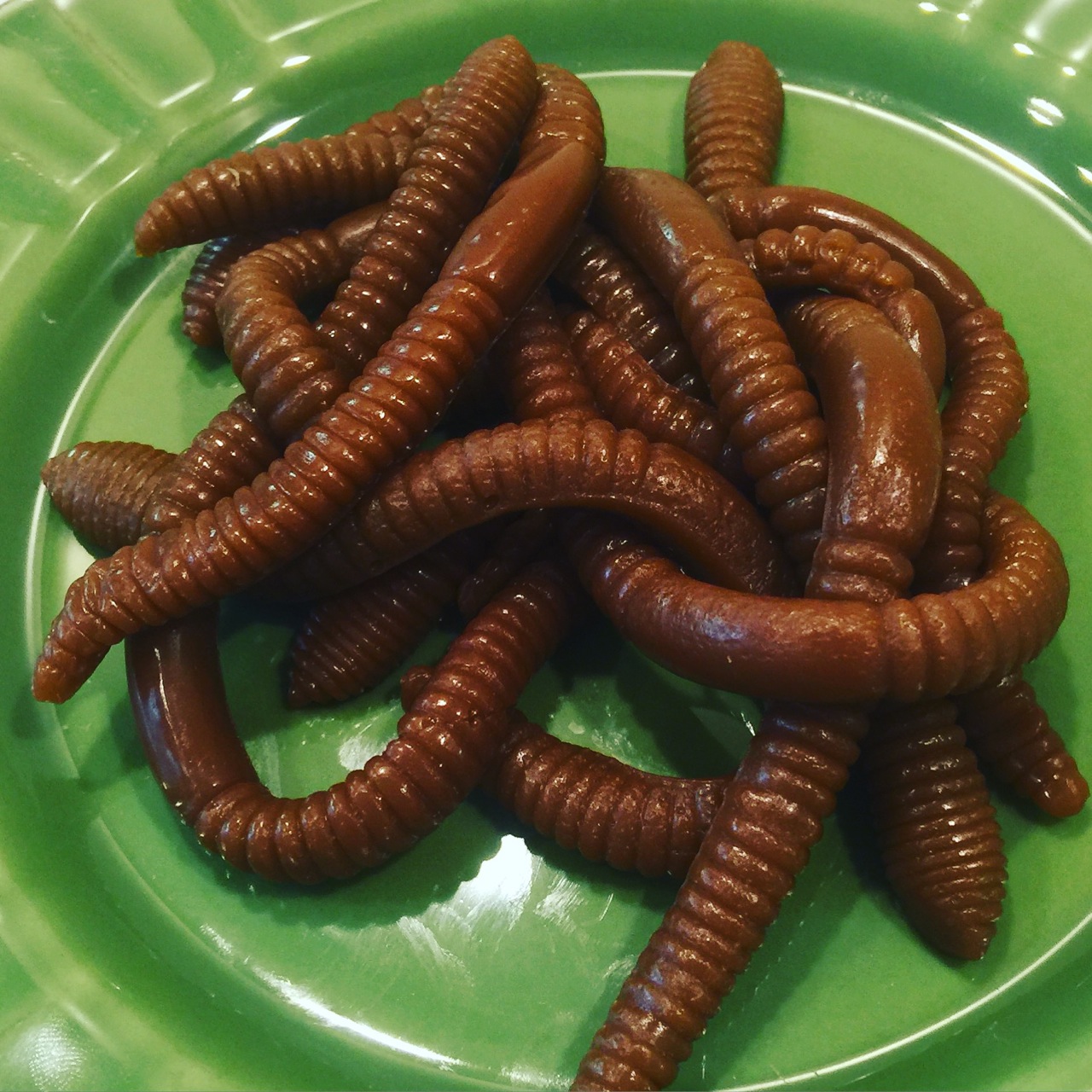 Transmission is via direct contact with contaminated items or even during sexual contact. Most infections are asymptomatic. While the cure rate is high, recurrences are common.
Transmission is via direct contact with contaminated items or even during sexual contact. Most infections are asymptomatic. While the cure rate is high, recurrences are common.
Etiology
Infection most commonly occurs in children, but any individual is susceptible to E. vermicularis infection. People from tropical climates and school-aged children are the most vulnerable. Infection is caused by the ingestion of the pinworm eggs. Transmission is most commonly through the fecal-oral route.[3]
Risk factors for pinworms include poor hygiene, eating after touching contaminated items and living with an individual who is identified as egg positive.
Epidemiology
The male to female infection frequency is 2 to 1. However, a female predominance of infection is seen in those between the ages of 5 and 14 years. It most commonly affects children younger than 18 years of age. It is also commonly seen in adults who take care of children and institutionalized children. Center for Disease Control and Prevention data indicates that there are about 40 million people estimated to have been infected in the United States. Transmission can occur via contact with contaminated clothes, bedding, personal care products, and furniture. Fecal-oral is the most common mode of transmission. Rarely, transmission can occur via inhalation mode when eggs are inhaled and then subsequently swallowed.
Center for Disease Control and Prevention data indicates that there are about 40 million people estimated to have been infected in the United States. Transmission can occur via contact with contaminated clothes, bedding, personal care products, and furniture. Fecal-oral is the most common mode of transmission. Rarely, transmission can occur via inhalation mode when eggs are inhaled and then subsequently swallowed.
Pathophysiology
Enterobius vermicularis is an organism that primarily lives in the ileum and cecum. Once E. vermicularis eggs are ingested, they take about 1 to 2 months to develop into adult worms which happens in the small intestine. These do not usually cause any symptoms when confined to the ileocecal area. The female adult worms and ova migrate to the anal area mostly at night time and deposit thousands of eggs in the perianal area. This migration causes pruritus. Eggs hatch near the anal area causing perianal pruritus. This leads to contamination of the fingers and results in ingestion of the eggs (autoinfection) and restarting of the life cycle of the worm.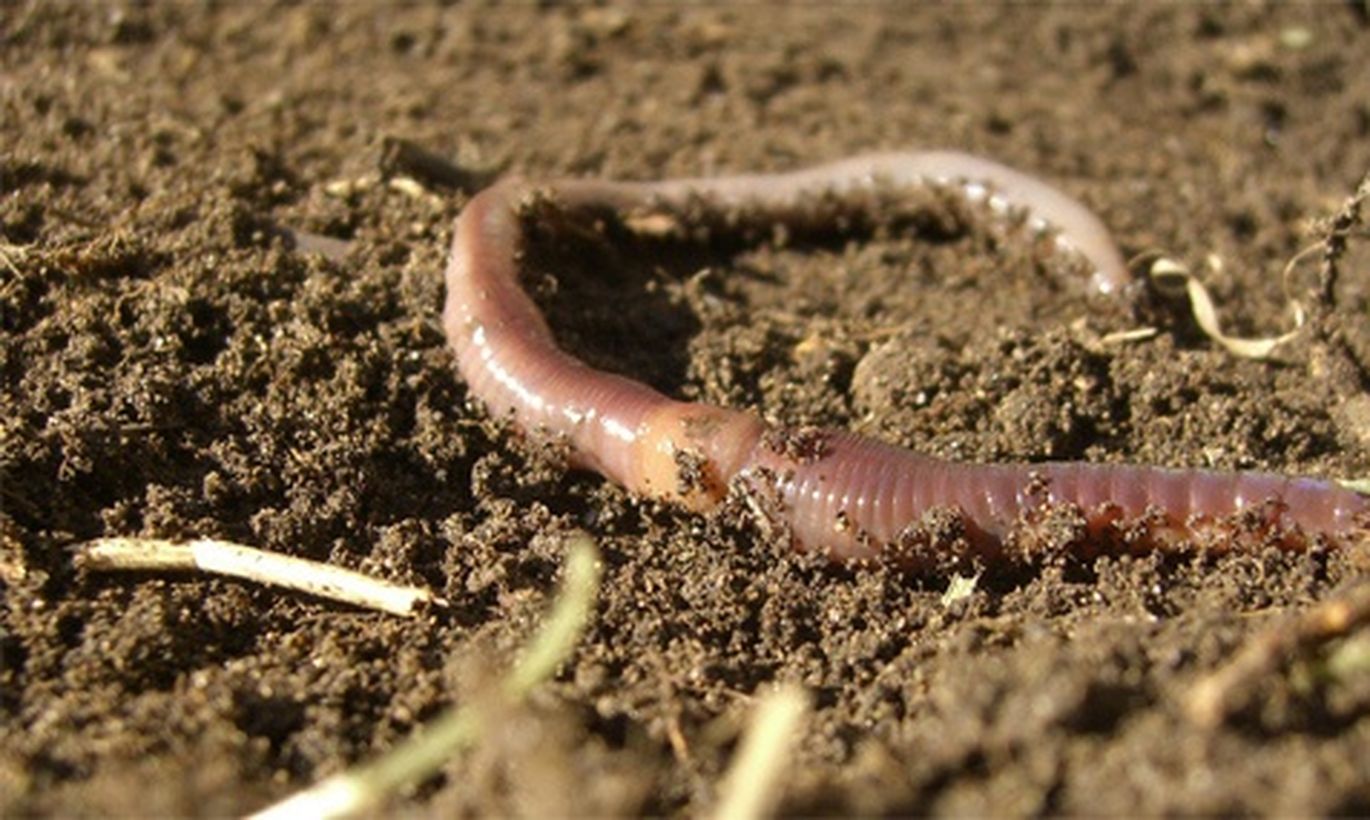 Occasionally, the larvae migrate back into the rectum and to the small intestine and begin the life cycle (retro infection).
Occasionally, the larvae migrate back into the rectum and to the small intestine and begin the life cycle (retro infection).
History and Physical
Approximately a third of patients with Enterobius vermicularis are asymptomatic. The most common symptom associated with pinworm infestation is perianal itching. Perianal erythema may be seen due to the itching and scratching. Sometimes a superficial bacterial infection can occur at the scratching sites resulting in erythema and warmth. Persistent itching can cause disturbances in sleep and may lead to insomnia. Female genitourinary infections have also been reported in the literature. Watery diarrhea has been reported in some patients. Sometimes abdominal pain and other serious complications like appendicitis can occur due to worms blocking the lumen in the appendix or lead to inflammation around the appendix.[4] Sometimes tiny thread-like worms may be visible to the naked eye in the perianal area.
Evaluation
Enterobius can be diagnosed through a cellophane tape test or pinworm paddle test where an adhesive tape-like material is applied to the perianal area and then examined under a microscope.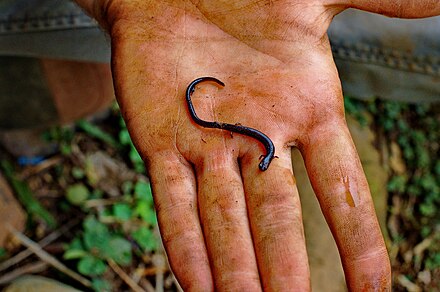 The examination might reveal characteristic ova which are 50 by 30 microns in size and have a flattened surface on one side or may reveal the worms. Female worms are around 8 to 13 mm long while male worms are 2 to 5 mm long. The examination is usually done in the early morning for higher diagnostic yield. If the examination is negative for five consecutive mornings, then the diagnosis is ruled out. Stool examination is not helpful in the diagnosis of E. vermicularis as they are only occasionally excreted in the stool usually. Sometimes analysis of the stool specimen is recommended to rule out other causes.
The examination might reveal characteristic ova which are 50 by 30 microns in size and have a flattened surface on one side or may reveal the worms. Female worms are around 8 to 13 mm long while male worms are 2 to 5 mm long. The examination is usually done in the early morning for higher diagnostic yield. If the examination is negative for five consecutive mornings, then the diagnosis is ruled out. Stool examination is not helpful in the diagnosis of E. vermicularis as they are only occasionally excreted in the stool usually. Sometimes analysis of the stool specimen is recommended to rule out other causes.
Treatment / Management
Treatment consists of the following antihelminthic medications:
Albendazole: Given on an empty stomach, a 400-mg, one-time dose followed by a repeat dose in 2 weeks
OR
Mebendazole: A 100-mg, one-time dose followed by a repeat dose in two weeks
OR
Pyrantel Pamoate: Available over the counter in the United States; Dose of 11 mg/kg up to a maximum 1 gm given 2 weeks apart
Other medications that have been used to treat enterobiasis are ivermectin and piperazine, although the latter has lower efficacy and higher toxicity. [5]
[5]
Enterobiasis can cause recurrent reinfection, so treating the entire household, whether symptomatic or not is recommended to prevent a recurrence.
Treatment of Enterobius infection in pregnancy should be reserved for patients who have significant symptoms. In pregnant patients, pyrantel pamoate is preferred over other medications.
Young pinworms tend to be resistant to treatment and hence two doses of medication, two weeks apart are recommended. At the same time, all members of the infected child must be treated. If a large number of children are infected in a class, everyone should be treated twice at 2-week intervals. Follow up is vital to ensure that a cure has been obtained.
Differential Diagnosis
Pruritus ani
Pruritus vulvae
Atopic dermatitis
Perirectal abscess
Cellulitis
Toxicity and Side Effect Management
Pyrantel pamoate can cause adverse effects like nausea, vomiting, anorexia, abdominal cramps, diarrhea.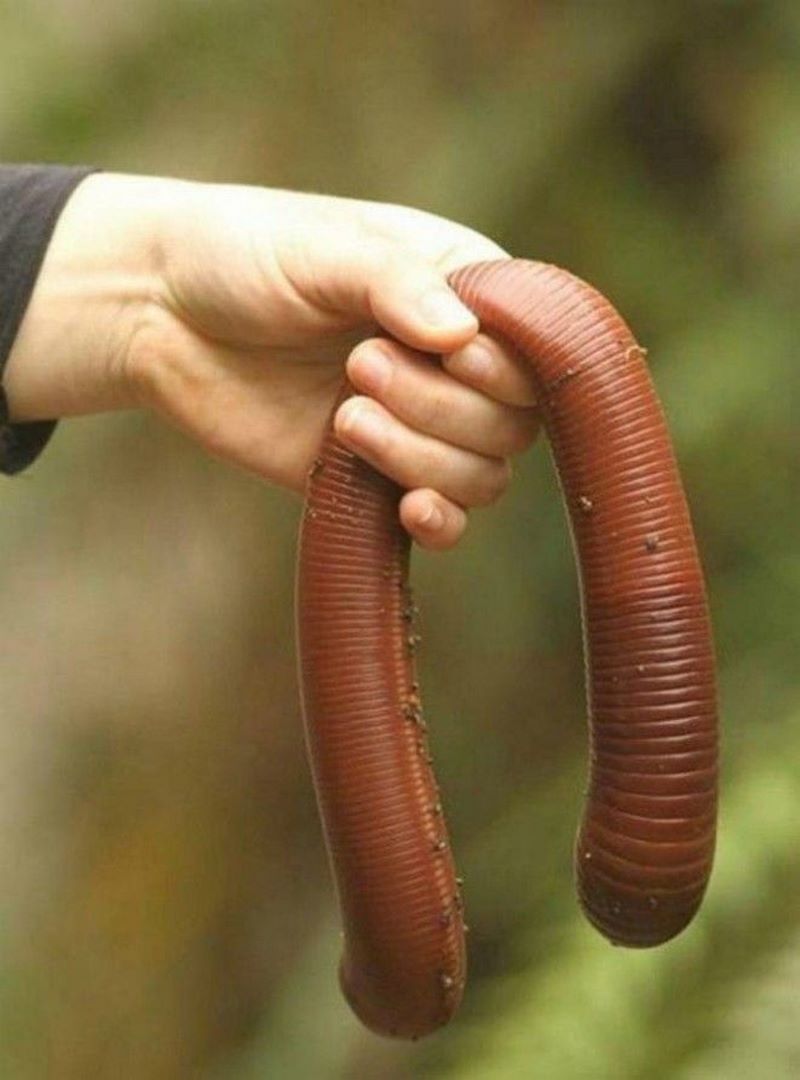 It should be avoided in children younger than 2 years of age. Mebendazole and albendazole should be avoided in the first trimester of pregnancy and children younger than 1 year of age. Pregnant patients should consult their doctors before initiating any therapy.
It should be avoided in children younger than 2 years of age. Mebendazole and albendazole should be avoided in the first trimester of pregnancy and children younger than 1 year of age. Pregnant patients should consult their doctors before initiating any therapy.
Prognosis
Prognosis following a pinworm infection is excellent. Patients are recommended to follow up with their physicians after completion of the treatment to make sure they do not have any reinfection. Is symptoms recur then testing and treatment as above should be re-initiated.
Ectopic pinworm infections have been described in many organs including the vagina, inguinal area, genitals, peritoneum, liver, oral cavity, lungs, and pelvis. There are even reported cases of appendicitis caused by impaction of the organ by pinworms. While death is very rare, recurrences are common. Eradicating pinworms from institutions is very difficult and long term surveillance is required. To completely eradicate the pinworm, everyone in the classroom or in the family has to be treated.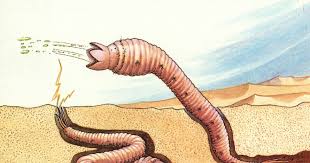
Complications
Occasionally a superficial bacterial infection can occur at the scratching sites due to intense perianal pruritus. Other complications reported are female genitourinary infections like vulvovaginitis, urinary tract infection in young girls. Appendicitis has also been reported as a consequence of longstanding pinworm infestation.
Deterrence and Patient Education
Patients should be educated on the need to maintain hygiene and wash their hands regularly to prevent the spread of infection and reinfection.
Pearls and Other Issues
Preventive strategies recommended are:
Washing hands regularly, particularly before eating and after changing diapers.
Taking a bath early in the morning to prevent egg contamination should be encouraged in at-risk patients.
Trimming of fingernails should be encouraged.
Children should be advised to avoid sucking their fingers and touching their perianal area.

Enhancing Healthcare Team Outcomes
Enterobius vermicularis infection is usually treated by the primary care nurse practitioner, physician assistant, or primary care physician. Pharmacists have a role in explaining to the patients the side effects of these medications used to treat pinworms as one of the drugs, pyrantel pamoate is available over the counter in the United States. School nurses should also be aware of the manifestations of pinworm infection to prevent their spread in the schools and daycares.[6] Patient education is vital in a coordinated approach by nurses, pharmacists, and clinicians. Parents and caregivers need to be told that all clothes, linen, and towels must be washed with soap and hot water. Hand washing and good hygiene must be practiced at all times. A coordinated team approach to care and followup will provide the best results. [Level V]
Figure
Enterobius vermicularis ova. Contributed by Centers for Disease Control and Prevention (Public Domain)
Figure
Anterior, Enterobius Vermicularis, pin worm. Contributed by Centers for Disease Control and Prevention (Public Domain)
Contributed by Centers for Disease Control and Prevention (Public Domain)
Figure
Head, Enterobius Vermicularis, Pinworm. Contributed by Centers for Disease Control and Prevention (Public Domain)
References
- 1.
- Cook GC. Enterobius vermicularis infection. Gut. 1994 Sep;35(9):1159-62. [PMC free article: PMC1375686] [PubMed: 7959218]
- 2.
- Markell EK. Intestinal nematode infections. Pediatr Clin North Am. 1985 Aug;32(4):971-86. [PubMed: 3895141]
- 3.
- Ashford RW, Hart CA, Williams RG. Enterobius vermicularis infection in a children’s ward. J Hosp Infect. 1988 Oct;12(3):221-4. [PubMed: 2904463]
- 4.
- Dahlstrom JE, Macarthur EB. Enterobius vermicularis: a possible cause of symptoms resembling appendicitis. Aust N Z J Surg. 1994 Oct;64(10):692-4. [PubMed: 7945067]
- 5.
- Yang CA, Liang C, Lin CL, Hsiao CT, Peng CT, Lin HC, Chang JG. Impact of Enterobius vermicularis infection and mebendazole treatment on intestinal microbiota and host immune response. PLoS Negl Trop Dis. 2017 Sep;11(9):e0005963. [PMC free article: PMC5629029] [PubMed: 28945752]
- 6.
- Wang S, Yao Z, Hou Y, Wang D, Zhang H, Ma J, Zhang L, Liu S. Prevalence of Enterobius vermicularis among preschool children in 2003 and 2013 in Xinxiang city, Henan province, Central China. Parasite. 2016;23:30. [PMC free article: PMC4961879] [PubMed: 27460881]
Swimmer’s Itch | HealthLinkBC File 52
What is swimmer’s itch?
Swimmer’s itch is a skin rash caused by an allergic reaction to small worm-like parasites called schistosomes (shiss-toe-soams). Schistosomes spend their life cycle as parasites in the bodies of water snails and in the blood stream of aquatic mammals, ducks or other waterfowl. During their life cycle, schistosome larvae (called cercariae) leave their snail host and swim near the surface of the water, looking for bird and mammal hosts.
How can I get swimmer’s itch?
If schistosome larvae are present in a body of water and you are in that water (swimming or wading) there is a chance that one or more larvae will burrow under your skin. Since the larvae cannot survive in humans they will die almost immediately. It is the reaction to these tiny parasitic larvae under the skin that causes swimmer’s itch.
Swimmer’s itch cannot be spread from person to person.
Where are these parasites found?
Schistosomes are found in many lakes, ponds and coastal waters in British Columbia, usually in the warm summer months. Their larvae are more likely to be found floating near the surface in shallow water along the shores of fresh waters and coastal beaches.
Cases of swimmer’s itch have been reported across Canada, including in B.C., and the northern United States.
Who has a higher risk of getting swimmer’s itch?
Young children who wade and splash in shallow water bodies may be at higher risk because:
- They are constantly getting wet without thoroughly drying off
- They usually play by the shore where the presence of schistosomes and their larvae is higher
- Younger children’s skin can be more sensitive than the skin of an adult
How can I avoid swimmer’s itch?
There is no sure way to avoid swimmer’s itch entirely unless you avoid water bodies. However, there are certain precautions you can take:
- Speak with other visitors to the area, local health officers or parks representatives about the water condition before getting in any lake, pond or beach
- Check for warning signs at public beaches, lakes and picnic areas for notices stating that swimmer’s itch may be present. Not all beaches have signage for swimmer’s itch. If you are unsure about the water, avoid areas with lots of weed growth. There may be more snails and larvae around aquatic plants
- Use a pier or dock to enter the water to help reduce your risk of exposure, as there may be more larvae near the shore. Make sure these structures are approved for swimming and do not dive into unknown waters. See HealthLinkBC File #39 Safety Tips for Swimmers or contact the Lifesaving Society at www.lifesaving.bc.ca for more information on swimming safety and drowning prevention
- Dry yourself off with a towel as soon as you come out of the water. If possible, have a shower and dry off right away. However, showering will not remove any larvae that have already burrowed under your skin
What are the symptoms?
Symptoms can range from a mild irritation to a very severe, itchy red rash. Scratching can cause severe pain and swelling or cause your skin to become infected. The severity of your symptoms will depend on how many larvae get on to your skin, and how sensitive you are to them. Symptoms tend to be worse after repeat exposure.
As you start to dry off and the larvae start to burrow into your skin, you may feel a tingling sensation. Small, pin sized red spots will appear, which grow into larger red rashes within several hours. As these red spots grow, the tingling feeling becomes a strong itch.
How long do the symptoms last?
A rash may appear within 12 hours after infection. The reaction may last from 2 to 5 days and symptoms can last as long as 2 weeks.
Repeat infections are usually worse. People become more sensitive to the larvae and develop stronger responses each time.
How do I treat swimmer’s itch?
There are some steps you can take that may reduce some of the itchiness. Check with your health care provider about what treatment is right for you.
Common treatments and advice include:
- Apply plain calamine lotion
- Take antihistamines. For children, consult your health care provider such as your local pharmacist, family doctor or HealthLink BC. Antihistamines may make young children sleepy. Antihistamines may stimulate the nervous system, causing hyperactivity
- Take shallow, lukewarm baths with 3 tablespoons of baking soda in the water
- Take colloidal oatmeal baths
- Apply cool compresses
- Avoid scratching. If you scratch too much the rash may become infected
Is swimmer’s itch dangerous?
The rash and itch can be very irritating, especially for young children, but there should not be any serious danger. However, if a skin infection occurs from too much scratching, you should see your health care provider.
For More Information
For more information on swimmer’s itch, see the Ministry of Environment’s brochure at www2.gov.bc.ca/gov/content/environment/air-land-water/water/water-quality.
Pinworms | Michigan Medicine
Topic Overview
What are pinworms?
Pinworms are a type of parasite that lives in the digestive system of humans. They are common throughout the world.
Adult pinworms are about 0.5 in. (12.7 mm) long and look like little white threads. Pinworm eggs are so tiny, you’d need a microscope to see them.
What causes pinworm infection?
Most people get infected by accidentally swallowing pinworm eggs. Anyone can get pinworms, but they are most common in school-aged children. They are usually spread like this:
- A child swallows pinworm eggs, and they travel to the child’s intestines. In about a month, the eggs hatch into worms. At night the female worms crawl out the rectum and lay eggs around the child’s anus.
- When the worms lay eggs, it can cause itching. If the child scratches, the eggs can cling to the child’s fingers and get stuck under the fingernails.
- The eggs then stick to things the child touches, such as clothing, dishes, toys, and furniture. The eggs can live 2 to 3 weeks outside the body.
- When you touch something the child has touched, the eggs get on your hands. Then if you touch food or your mouth, you can swallow the eggs. This starts the cycle over again.
Pinworms spread easily in homes, day care centers, schools, and other places where groups of people spend time together. So if one person in your family has pinworms, others probably do too.
It’s possible to get pinworms by inhaling airborne eggs, but this is rare. It’s also rare to get pinworms from a swimming pool.
Pinworms are spread from person to person. Pets don’t get pinworms and can’t spread them to humans.
What are the symptoms?
Many people with pinworms don’t have symptoms and don’t know that they’re infected. When symptoms occur, the most common ones are:
- Itching around the anus.
- Restless sleep, because itching is often worse at night.
Pinworms can be annoying. But they don’t carry disease, and they rarely cause serious health problems. Sometimes people get a skin infection from scratching.
How are pinworms diagnosed?
To find out if you have pinworms, your doctor will ask about your past health and check the skin around your anus.
The doctor may ask you to do a transparent tape test at home. To do the test, you press a piece of clear, sticky tape on the skin around your anus in the morning before you get up. The doctor will put the tape under a microscope to look for pinworm eggs. You might need to repeat this test a few times.
How are they treated?
You can treat pinworms with over-the-counter or prescription medicine that kills the worms. Treatment can help keep you from getting infected again and from spreading the infection to other people.
You will probably need two doses, 2 weeks apart. That’s because the medicine kills the worms but not the eggs. The second dose will kill any worms that hatch after the first treatment.
Pinworm medicine may not be safe for children younger than 2 and women who are pregnant or breastfeeding. So to reduce their risk of infection, a doctor may recommend that all other household members be treated with medicine.
Call your doctor if:
- Medicine hasn’t cleared up the infection.
- The medicine is causing side effects.
- You have new or worse symptoms.
How can you keep from spreading pinworms or getting them again?
Pinworms spread easily and often come back. To reduce your chances of spreading the infection or getting infected again:
- Wash your hands carefully and often. Teach your children to do the same, especially after they use the toilet and before they handle food.
- Keep your fingernails short, and don’t scratch the itch. Wearing gloves at night may help prevent scratching.
- Bathe or shower every day.
- Don’t share or reuse towels or washcloths.
- Change your underwear and bedding each morning.
- Wash clothes, bedding, and towels regularly. Dry them in a hot dryer.
If anyone in your household gets pinworms again, the whole family may need to take medicine.
Onchocerciasis
Onchocerciasis occurs mainly in tropical areas. More than 99% of infected people live in 31 sub-Saharan African countries:
- Angola
- Benin
- Burkina Faso
- Burundi
- Democratic Republic of the Congo
- Gabon
- Ghana
- Guinea
- Ghana
- Cameroon
- Kenya
- Cote d’Ivoire
- Liberia
- Malawi
- Mali
- Mozambique
- Niger
- Nigeria
- United Republic of Tanzania
- United Republic of Tanzania
- Senate
- Republic of Tanzania
- Sudan
- Togo
- Uganda
- Central African Republic
- Chad
- Equatorial Guinea
- Ethiopia
- South Sudan
Guinea
Senate
Onchoocercioz Venezuela (Brazilian Republic)
Programs for the prevention, control and elimination of
There is no vaccine or medicine to prevent O. volvulus infection.
Between 1974 and 2002, onchocerciasis was brought under control in West Africa through the Onchocerciasis Control Program (OCP), thanks mainly to helicopter and aircraft spraying of insecticides to kill midge larvae (vector control). These efforts have been complemented by large-scale ivermectin distribution campaigns since 1989.
Thanks to PBO, 40 million people were cured of infection, 600,000 people were prevented from blindness and 18 million children were born free from the threat of this disease and blindness. In addition, 25 million hectares of abandoned arable land were re-used for settlement and crop production, feeding 17 million people a year.
The African Onchocerciasis Control Program (APPO), established in 1995 to control onchocerciasis in the remaining endemic countries of Africa, was closed at the end of 2015.after the transition to the elimination of onchocerciasis began. Its main strategy was to provide support-free, community-based treatment with ivermectin and, where necessary, to manage disease vectors in an environmentally friendly manner. Over the past year, more than 119 million people have received ivermectin treatment with APPO, and in many countries the incidence of onchocerciasis has decreased significantly. By the time APAP closed, more than 800,000 people in Uganda and 120,000 people in Sudan no longer needed ivermectin.
In 2017, more than 152 million people were treated with ivermectin in Africa with the community-based ivermectin treatment strategy, representing more than 70% of global coverage. The Expanded Neglected Tropical Disease Elimination in Africa Special Project (ERTDD), which aims to provide chemotherapy to prevent NTDs, has four main objectives: 1. Scaling up treatment to reach 100% geographic coverage; 2.downscaling: stopping treatment after interruption and control of transmission; 3. strengthening information systems for evidence-based action; 4. Ensuring a more efficient management of donated drugs by improving supply chain management practices. The RSPHRTD is hosted by the WHO Regional Office for Africa.
The Expanded Special Project for the Elimination of NTDs in Africa (EPPEP), which replaces APCD, is intended to support NTD control programs, including onchocerciasis control programs, in a number of priority countries.It will bring together a group of experts who can provide technical assistance to all member countries. The RSPEHTD, like the TSP and APPO, is based in the WHO Regional Office for Africa.
In 1992, the Program for the Elimination of Onchocerciasis in America (PLOA) was established. Its goal was to end eye disease by 2015 and stop transmission in America through large-scale biannual ivermectin treatment campaigns. Treatment coverage exceeded 85% in all 13 lesions in the region in 2006, and by the end of 2017, transmission had been interrupted in 11 of the 13 lesions.
Eradication efforts are currently focused on the Yanomami people living in Brazil and Venezuela (Bolivarian Republic of).
On 5 April 2013, the WHO Director-General issued an official letter confirming that onchocerciasis has been eradicated in Colombia. Colombia became the first country in the world to be certified and declared by WHO as a country free of onchocerciasis. In September 2014, Ecuador became the second country, in July 2015 Mexico became the third country, and in July 2016 Guatemala became the fourth country in the world free from river blindness.Over 500,000 people in the Americas no longer need ivermectin therapy. \ n
Treatment
WHO recommends treating onchocerciasis with ivermectin at least once a year for approximately 10-15 years. In areas where O. volvulus and Loa loa are both common, treatment strategies need to be adjusted. Loa loa is another parasitic filaria that is endemic in Cameroon, Central African Republic, Congo, Democratic Republic of Congo, Nigeria and South Sudan.Treatment of patients with high blood levels of L. Loa can sometimes lead to severe adverse reactions. In affected countries, it is recommended that the recommendations of the Committee of Experts on Mectizan (CEM) / APPO regarding the management of possible severe adverse reactions be followed.
WHO activities
WHO headquarters provides administrative, technical and operational research support in all three regions where onchocerciasis has been transmitted. In 2017, WHO established a Technical Subgroup on Onchocerciasis (TVET) to advise on the development of policies and guidelines, and to prioritize research needed to achieve the program’s elimination goals.
The WHO Regional Office for Africa, which oversaw the Onchocerciasis Control Program (TSP) from 1975 to 2002 and the African Onchocerciasis Control Program (APOC) from 1995 to 2015, is currently monitoring for the implementation of the Expanded Special Project for the Elimination of NTDs in Africa (EPRSTP), which will play an important role in coordinating the control and elimination of NTDs susceptible to preventive chemotherapy in the region.
As part of the PLAA partnership, WHO collaborates with endemic countries and international partners in the WHO Region of the Americas. Although there is no formal coordination program for the WHO Eastern Mediterranean Region, two countries in the region are also involved in eradication activities.
“,” datePublished “:” 2019-06-14T22: 00: 00.0000000 + 00: 00 “,” image “:” https://www.who.int/images/default-source/departments/ntd-library/ onchocerciasis / 7373161016663-zn326223.jpg? sfvrsn = 11c10d9a_8 “,” publisher “: {” @ type “:” Organization “,” name “:” World Health Organization: WHO “,” logo “: {” @ type “:” ImageObject “,” url “:” https: // www.who.int/Images/SchemaOrg/schemaOrgLogo.jpg”,”width”:250,”height”:60″>”>”dateModified”:”2019-06-14T22:00:00.0000000+00:00″,”mainEntityOfPage ” : “https://www.who.int/ru/news-room/fact-sheets/detail/onchocerciasis”, “@context”: “http://schema.org”, “@type”: “Article” };
90,000 Helminthiasis. – BU “Nizhnevartovsk city polyclinic”
According to the World Health Organization, helminthic diseases (helminthiases), related to parasitic diseases, are in fourth place in the degree of harm to human health after coronary heart disease, diarrhea, tuberculosis.They infected about 90% of the world’s population.
Helminths (Greek helmins, helminthos, worm, worm; syn. Worms) – parasitic worms, causative agents of human, animal and plant diseases. Of the more than 270 existing species in the human body, over 150 species of helminths can parasitize.
About 65 species of parasites have been registered in our country, of which 18–20 species are most common. Almost half are roundworms (nematodes), similar to a string, the rest are tapeworms (cestodes), resembling a ribbon in appearance, and flukes (trematodes), which stick to the wall of the intestine, gallbladder.
THE MOST COMMON TYPES OF HELMINTHS AND THE SYMPTOMS OF THEIR APPEARANCE IN THE BODY.
Ascaris – roundworms 15-40 cm long; live in the small intestine. The disease is caused by ascariasis. Ascaris eggs are excreted along with feces from the human intestine and develop in the soil. They are infected most often through the soil (especially easily children who do not wash their hands thoroughly enough), unwashed vegetables. Patients have decreased appetite, nausea, vomiting, abdominal pain, diarrhea or constipation.Headache, weakness, irritability are noted. In rare cases, intestinal obstruction may occur. Roundworms are especially harmful to children. Such children are lagging behind in development: their growth and weight gain slow down, they get sick more often, get tired quickly, and schoolchildren have a decline in academic performance.
Vlasoglava – thin worms 30-35 mm long; live in the large intestine. The disease is caused by trichocephalosis. Infection with whipworms occurs in the same way as infection with ascaris. Patients have general malaise, fatigue, decreased appetite, nausea, often headache, dizziness.
Pinworms – small worms 3-12 mm long; live in the small and large intestines. The disease is caused by enterobiasis. The female with fertilized eggs goes down to the anus and mostly goes outside at night and lays from 10 to 15 thousand eggs on the skin of the perineum. Pinworms crawling on the skin causes unbearable itching. When combing itchy areas in a dream, pinworm eggs fall on the fingers, under the nails. From the hands, they can be brought into the mouth (as a result of which repeated self-infection is possible), and also scattered over linen and surrounding objects.Patients have abdominal pain, nausea, decreased appetite, insomnia, irritability.
Trichinella – very small worms up to 4 mm long. The disease is caused by trichinosis. A person becomes infected by eating pork meat and meat products infected with Trichinella. Infection is also possible when eating meat of wild animals (bear, badger, wild boar). A patient with trichinosis has a headache, rises in body temperature, edema of the eyelids, puffiness of the face. By the end of the first week of the disease, pain in the muscles of the trunk, limbs is noted, the acts of breathing and swallowing, conversation and movement of the eyeballs are difficult and painful.Various rashes appear all over the body.
Bovine tapeworm (all tapeworms are often called tapeworms) – has a length of 4-10 m. The causative agent of the disease is teniarinchiasis. A person becomes infected by eating insufficiently fried or cooked meat of cattle, in which there were larvae. Housewives often get infected by tasting raw minced meat. Often the disease is asymptomatic, it is diagnosed in such situations by chance: either when the patient suddenly finds segments of the helminth in bed or on clothes, or when the parasite eggs are found during helminthological examination.Possibly impaired appetite, nausea, vomiting, unstable stools, irritability, dizziness, insomnia, weight loss; children have a delay in physical and mental development.
Pork tapeworm – length 2-3 m; the causative agent of diseases is teniasis and cysticercosis. A person becomes infected with the larvae found in pork meat. The signs of the disease are the same as those of a bovine tapeworm infection. The most significant difference between teniasis and teniarhynchosis is the inability of the pork tapeworm segments to leave the intestines on their own, and, therefore, the patient does not have the feeling of a foreign object crawling over the body.The clinical manifestations of cysticercosis are very diverse and depend on the localization of parasites, their number, stage of development and individual reactivity of the patient’s body. Distinguish cysticercosis of the brain, ventricles of the brain, eyes.
Wide ribbon – length reaches 10 m and more. The causative agent is diphyllobothriasis. A person becomes infected by eating raw, undercooked, undercooked or undersalted river fish parasite infested with larvae. The patient develops nausea, vomiting, abdominal pain, appetite decreases, stool becomes unstable, body temperature rises to 37-380 C.Weakness, fatigue, dizziness appear.
Feline fluke, feline or Siberian fluke – the causative agent of opisthorchiasis. A person becomes infected in the same way as with diphyllobothriasis. The disease is characterized by an increase in body temperature up to 37-380C, skin rashes, weakness, impaired appetite, gastrointestinal disorders, anemia develops. Severe complications of opisthorchiasis can be: acute intestinal obstruction, acute pancreatitis, primary liver cancer.
Toxocariasis in humans is caused by the migration of toxocarial larvae in internal organs and tissues.Infection occurs when infested dog helminth eggs enter the gastrointestinal tract of a person with dirty hands, unwashed vegetables, berries, and water. Toxocariasis is characterized by a long recurrent course (from several months to several years). There are two forms of the disease: visceral (systemic) and toxocariasis of the eye. The main symptoms are fever, dry cough, rash, and others.
CLASSIFICATION OF HELMINTHOSIS, SOURCES AND POSSIBLE, CONSEQUENCES OF INFECTION.
In accordance with the epidemiological classification, helminthiases are divided into 3 groups:
geohelminthiasis – invasions, the causative agents of which spend part of the cycle in the human body, and the rest in the external environment, mainly in the soil;
biohelminthiasis – invasions, the causative agents of which spend part of the development cycle in the human body, and the rest in the body of one or more intermediate hosts;
contact helminthiases – invasions in which a parasite in an intermediate stage of development is released from the human body in an invasive state and is capable of infecting other people.
Worms can be transmitted by insects, cats and dogs. Infection occurs through the mouth with water, dust, unwashed hands and dirty food, walking barefoot or lying on the ground.
Children are affected by worms most often at the age of 3-12 years. Several types of helminths can parasitize in a child’s body at the same time. Most often, roundworms and pinworms “like to be friends”. In the southern regions, a combination of ascaris, whipworm and dwarf tapeworm is often found. Worms live in the body in two types – larvae (eggs) and sexually mature individuals.They can parasitize in any organ of the child, but most often in the intestines. The mass infection of one person with worms can be different – from 1 copy to 1000 worms.
Helminths cause a variety of pathological changes in the human body: mechanical effect on surrounding tissues and organs, intoxication and sensitization by metabolic products, absorption of minerals, violation of the vitamin and nutritional balance, immunosuppression (suppression of the immune system).
DIAGNOSTICS AND TREATMENT OF CLAY DISEASES.
Diagnosis of helminthiasis is based on clinical data, epidemiological history, and the results of parasitological laboratory tests. Laboratory diagnostics of enterobiasis is carried out by microscopic examination of scrapings taken from the perianal region. Laboratory diagnostics of geohelminthiasis (ascariasis, trichocephalosis) includes analysis of feces for helminth eggs.It is also possible to identify these parasites with the help of an immunological study. This study is based on the detection of specific antibodies to helminths. Thanks to early diagnosis, the patient can avoid the development of a number of complications.
For the treatment of helminthiasis, special antihelminthic drugs are used. The choice of medication depends on the specific type of helminths found in the patient. Self-medication of helminthiasis is not permissible!
The criterion of recovery is repeated negative results of laboratory tests for helminth eggs.
MEASURES FOR PREVENTION AND PROTECTION AGAINST CLAY DISEASES.
The basis of the set of measures should be sanitary and hygienic measures.
Required:
- Wash hands before eating, after using the toilet and after every contamination, as well as after playing with pets.
- Cut your nails short, do not bite them. There may be eggs of worms and germs under the nails.
- thoroughly wash raw vegetables and fruits before eating in running water and pour over them with boiling water.
- Do not drink raw water from rivers, ponds and wells, use only boiled water.
Infectious disease doctor
BU “Nizhnevartovsk city polyclinic”
Ivshin G.Yu.
Views: 9541
Anal itching – ProMedicina Ufa
Anal itching – a condition characterized by unrelenting persistent itching in the anus and is a clinical symptom of many proctological diseases.However, quite often in patients suffering from anal itching, intestinal diseases are not detected.
In order to identify the causes of anal itching, laboratory (examination of perianal scraping, feces for helminth eggs, blood glucose) and instrumental diagnostics (anoscopy, sigmoidoscopy) are carried out. The algorithm for eliminating anal itching involves conservative or surgical treatment of the underlying pathology, the use of local remedies, and physiotherapy.
Reasons
The most likely factors that can cause itching in the anus are:
- Worm infestation by pinworms.The presence of worms in humans is accompanied by severe itching around the anus. This symptom is most pronounced in the evening and at night. Most often, pinworms are found in young children who neglect the rules of personal hygiene and can become infected with helminthic infestation in the village, playing in the sandbox, as well as from unwashed vegetables and fruits.
- Anorectovaginal diseases: anal fissures, hemorrhoids, fistulas, genital warts and anogenital warts.
- Dermatological diseases.Anal itching is one of the main symptoms of head lice, scabies, lichen planus, seborrheic eczema, psoriasis, eczema, mycotic skin lesions and various allergic dermatitis.
- Microorganisms, bacteria and fungi. Itching of the anus usually accompanies such parasitic diseases as teniidosis, amebiasis, giardiasis, opisthorchiasis, etc. In some cases, this symptom also occurs with gonorrheal-Trichomonas infection.
- The cause of itching in the anus can be diseases of the stomach and intestinal tract: ulcers, hypo- and hyperacid gastritis, polyposis, dysbiosis, colitis, dyskinesia.
- Internal diseases (liver and pancreas diseases, diabetes mellitus, oncological pathology, intoxication).
- Contact dermatitis – allergic reactions to topical application of ointments, deodorants, soaps and washing powders.
- Lack of personal hygiene, use of rough toilet paper, frequent shaving of hair around the anus, stale underwear, synthetic underwear, or wearing a thong with coarse seams.
In some cases, the use of antibiotics, especially erythromycin and tetracycline drugs, becomes the cause of itching in the anus.The risk group for the disease also includes people who are overweight or sweating.
Symptoms
The main symptom of the disease is a constant itching in the anal area that worsens at night and on contact with clothing. With a long course of the disease, the skin around the anus turns red, becomes scratched, coarsens over time or, conversely, becomes thinner, and it is easy to injure it.
Diagnostics
Despite the fact that the symptoms manifest themselves quite clearly, it is possible to talk about what problem it is provoked and what needs to be done next only after consulting a specialist, namely a proctologist, who will conduct a number of studies and prescribe tests, according to the results of which and will make an accurate and correct diagnosis.
In addition, a number of studies are assigned:
- Scraping. From this analysis, you can say for sure whether the cause of the itching is the presence of worms. In the event that it is positive, then the doctor will direct you to donate feces for the presence of worm eggs in it.
- Blood sugar test. It is very important to donate blood for sugar, since in a few percent of cases the reason lies precisely in this. Before taking the analysis, it is advisable not to eat from the very evening, as well as in the morning. It is allowed to drink only water and then in small quantities
- Bacteriological analysis of feces.This analysis will be prescribed to the patient if, in addition to itching in the anus, he is also tormented by loose stools, which do not stop for more than three days (taking into account the intake of drugs to strengthen it).
- Irrigoscopy and sigmoidoscopy, which are prescribed when the doctor suspects problems with the rectum.
- Ultrasound examination of the prostate in men.
- Ultrasound examination of the abdominal organs in the event that, in addition to itching, nausea and periodic vomiting are constantly tormented.
- Gastroscopy when there are problems with digestion.
Women also need a consultation with a gynecologist.
Treatment
As a prophylaxis and to reduce the patient’s discomfort with anal itching, daily hygiene procedures are recommended, after a bowel movement, wet antibacterial wipes or cool running water can be used to cleanse the skin around the anus, it is better to give preference to loose underwear made of natural fabrics that allow air to pass through well.
In difficult cases, the doctor may prescribe the intake of glucocorticosteroid hormones, treatment of the itchy area with corticosteroid ointments, cooling water-alcohol solutions with anesthesin, menthol, lidocaine, novocaine, soothing suppositories.
It is necessary to exclude: spicy food, which can contribute to the production of secretions that irritate the skin and mucous membranes of the anus. Avoid stress, as itchy skin can be the result of general neuro-emotional stress.
Based on the results of the examination and establishing the cause of anal itching, a course of drug treatment is prescribed. Medicines can be applied intravenously, orally, and topically to the inflamed area.
90,000 GUZ Lipetsk City Children’s Hospital
Enterobiasis in children – helminthic disease caused by round
worms – pinworms. Enterobiasis in children is manifested by severe perianal itching (especially at night), abdominal pain, absence
appetite, nausea, upset stools, irritability, sleep disturbances, allergic reactions, weight loss, growth retardation, and
development.
For microscopic detection of pinworm eggs in children, a scraping or imprint from the perianal folds for enterobiasis is performed. Treatment
enterobiasis includes deworming children with repeated parasitological examination, personal hygiene.
Causes of enterobiasis in children: Enterobiasis belongs to anthroponous intestinal helminthiasis in children, caused by small roundworms.
Adult female pinworms are 5–10 mm long, males 3 mm. The shape of the helminths is fusiform, the color is milky white; end section of the body
females are pointed, which was the name of the worms – pinworms.Adult helminths parasitize in the lower parts of the small and large intestine,
attaching to the intestinal wall with the help of head vesicles. To lay eggs, female pinworms move into the rectum and, crawling out
outside, lay eggs in the anus, after which they die. The life span of an individual pinworm is 1-2 months.
The number of pinworms simultaneously parasitizing in the intestines with enterobiasis in children can reach from several tens to several
thousand.
The laid eggs mature in 4-6 hours and become infectious (invasive).They get on the baby’s underwear and bedding,
under the nails during scratching of itchy areas, on toys and dishes, from where they can be reintroduced into the mouth, causing repeated autoinvasion. In the intestines from
eggs hatch into larvae, which then turn into sexually mature individuals and lay eggs, maintaining a long course of enterobiasis. Outside
the host organism, the causative agents of enterobiasis in children can remain viable for up to 25 days.
Thus, children and adults with enterobiasis serve as a reservoir and source of infection; fecal-oral transmission mechanism
it is sold by food and household routes.From the moment of infection to the development of symptoms of enterobiasis in children, 12-14 days pass.
Children suffering from helminthic invasion can infect not only themselves, but also other children, therefore the prevalence of enterobiasis is especially high in
children’s groups. This is facilitated by neglect of hygiene rules, children’s habits of sucking fingers, biting nails, taking toys in their mouths,
non-observance of sanitary standards in children’s institutions and at home, etc.
Symptoms of enterobiasis in children: The severity of clinical symptoms of enterobiasis in children depends on the degree of invasion, the duration of the course
helminthiasis, individual reactions and the age of the child.The leading complaint of a child suffering from enterobiasis is anal itching, more
pronounced in the evening and at night. Itching is caused by the migration of females into the rectum to lay eggs and persists for 2-3 days; then dies down and
repeats after 3-4 weeks in the next cycle of infection. With a massive invasion, itching in the anus can bother the child practically
constantly. Examination of the perianal region reveals redness, local irritation and scratching of the skin, sometimes eczema and weeping dermatitis.
The constant and intense itching that accompanies the course of enterobiasis in children leads to sleep disturbances, bruxism, and bedwetting.Abdominal syndrome is no less frequent manifestation of enterobiasis in children. Abdominal pain is usually a transient cramping
character, localized in the paraumbilical zone or the right iliac region. Sometimes the pain syndrome with enterobiasis in children is pronounced
so intensively that it requires differential diagnosis with surgical pathology. In case of penetration into
appendix, pinworms can cause acute appendicitis in children.
Dysfunction of the digestive tract with enterobiasis in children is characterized by a decrease in appetite, unstable stools (alternating
periods of constipation and loose stools), tenesmus, bloating, nausea, regurgitation and vomiting.Violation of the process of absorption of nutrients
accompanied by loss of body weight, delayed growth and development of the child.
Typical manifestations of allergic reactions in children with enterobiasis are atopic dermatitis, allergic conjunctivitis, bronchial
asthma. Due to immunological deficiency, children suffering from enterobiasis are classified as long-term and often ill.
Treatment of enterobiasis in children: The main condition for the successful cure of a child from enterobiasis is careful adherence to personal hygiene:
daily change of underwear and bedding for children, toilet of the genitals, disinfection of toys and premises, short cutting of nails and
dr.
Of the drugs used for the treatment of enterobiasis in children, the most commonly used drugs are the following pharmacological
groups: derivatives of tetrahydropyrimidine (pyrantel) and carbamate benzimidazole (carbendacim, mebendazole). They act like
on mature individuals of pinworms, and on larvae and eggs. When detecting enterobiasis in a child, deworming is necessary for everyone
family members.
Evening cleansing enemas with the addition of baking soda are shown to flush pinworms from the lower colon.With the aim of
to prevent pinworms from spreading, it is recommended to lay a cotton swab smeared with petroleum jelly in the child’s anus at night
oil. All contact children in an organized team visited by a sick child should be examined for enterobiasis.
Two weeks after deworming, children are examined three times for enterobiasis with an interval of 1-2 days. With negative tests, the child
considered healed. If signs of invasion persist, it is necessary to repeat the administration of the drug in the same dose.
Prediction and prevention of enterobiasis in children: , as a rule, drug treatment of enterobiasis and hygiene
activities allows you to save children from pinworms. However, while maintaining contact with the source of infection, repeated helminthic invasion is possible.
Since enterobiasis is considered a disease of dirty hands, prevention consists in instilling hygiene skills in children from an early age. Should
cut your child’s nails short; teach to wash your hands after using the toilet, before eating, after walking; wash the child in the morning and evening; daily
change underwear; prohibit finger sucking and nail biting.
Children attending preschool educational institutions are subject to preventive examination for enterobiasis; junior schoolchildren; patients in children’s hospitals;
children visiting swimming pools and other categories.
Pediatrician of the district children’s polyclinic № 6 L.V. Egupova
What causes pain and itching of the anus – blog of the ON Clinic medical center
Itching in the anal region is a pathological condition that occurs with a wide range of bowel diseases. A person experiences constant discomfort that interferes with normal life.
In some cases, itching worsens at night, interfering with sleep and rest. As a result, performance decreases, the patient becomes lethargic, irritable, depressed and apathetic.
In addition to itching and burning, the patient may experience other symptoms:
- redness of the skin;
- change in the density of the skin near the anus – its thinning or, conversely, thickening;
- the appearance of a rash, weeping ulcers, eczema.
What is itching in the anus?
Itching is a painful tickling sensation in the skin, causing an obsessive desire to scratch the affected area. Itching often occurs due to irritation of the skin near the anus. For example, with idiopathic itching, there is an increased production of mucus by the intestinal walls. Fluid is constantly released from the anus, causing inflammation and redness of the surrounding tissue. This becomes the cause of discomfort. But other causes also lead to inflammation.
For example, with enterobiasis, excruciating itching occurs due to the movement of small parasitic worms – pinworms. The burning sensation intensifies in the dark, when the worms move closer to the anus. By doing this, they irritate the nerve endings, which causes an itchy burning sensation. But these are not all factors due to which this pathological condition can develop.
What causes itching in the anus?
Anal itching is not always caused by pathological processes in the body.
It can also be associated with external influences:
- using hard toilet paper that injures the skin;
- excessive or insufficient intimate hygiene;
- work in a dusty room.
Inappropriate soaps or allergies to cosmetic fragrances also irritate the skin and can cause burning and itching.
Irritation of the anal region provokes various diseases:
- parasitic infestations;
- inflammation of hemorrhoids;
- fungal infections;
- genitourinary infections;
- neoplasms;
- insufficient anal sphincter function;
- diabetes mellitus and other severe chronic diseases.
In many cases, an unpleasant symptom occurs due to diseases of the rectum. Their spectrum is quite wide: skin neoplasms, chronic proctosigmoiditis, and dysbiosis can cause a burning sensation. Other symptoms gradually appear: for example, pain and sting during bowel movements, bloody and mucous clots in the stool, a feeling of pressure and heaviness in the lower abdomen. But the main symptom remains irritation and redness of the skin.
In women, itching can be associated with certain gynecological diseases.At the same time, it gives off not only to the anal area, but also spreads to the labia majora and small labia, the vulva. The perineum turns red and swells, there is abundant discharge with an unpleasant odor.
The causes of a burning sensation are varied, therefore, if it occurs, it is recommended to contact a medical center for an examination by a proctologist.
Itching around the anus
Skin lesions near the anus are associated with external and internal factors.The first includes:
- excessive sweating. More common in overweight people. Sweat begins to accumulate in the perineum, irritating the skin. As a result, diaper rash appears, which serve as a source of discomfort;
- Wearing tight synthetic underwear. Linen fabric disrupts natural air exchange, prevents the normal removal of moisture. Rough internal seams violate the integrity of the skin, impair blood microcirculation.All this creates favorable conditions for the development of pathogens.
If the irritation is caused by external causes, it is quite simple to cure it. The patient is advised to abandon synthetic detergents (or choose hypoallergenic cosmetics tested by dermatologists), choose natural, loose underwear with a comfortable cut.
It is more difficult to treat conditions associated with internal pathologies. For example, itching is the main symptom in dermatitis and psoriasis, lichen, eczema.Dysbiosis, diarrhea can cause a burning sensation. Too frequent bowel movements negatively affect the state of the mucous membrane: blood rushes to it, the tissues swell, become more sensitive – any touch is accompanied by pain. But there are more serious reasons that disrupt the work of the sphincter.
For example, chronic metabolic disorders lead to the accumulation of toxins in tissue cells. As a result, the patient develops skin rashes, including the perineum.Therefore, itching accompanies diabetes mellitus, cirrhosis and liver tumors, pathologies of the pancreas.
Which doctor treats itching in the anus?
In case of redness of the anal area and the appearance of itching, it is worth making an appointment with a proctologist. The specialist will listen to complaints, clarify the family history, and conduct an initial examination. But for an accurate diagnosis, examinations will be required, the spectrum of which will be determined by the doctor.
Typical examinations include:
- blood and urine tests;
- irrigoscopy;
- colonoscopy;
- sigmoidoscopy;
- Anoscopy and other bowel examinations.
In some cases, consultations of other doctors are required: urologist or gynecologist, endocrinologist, dermatovenerologist. Directions to them are given by the proctologist. Based on the results of the tests carried out, a disease that causes irritation of the anal region is established, and the appropriate treatment is selected.
Why does the anus hurt?
In some patients, itching turns into aching or cutting pain in the anal region. Attacks differ in duration and intensity, and are directed to the lower abdomen, lower back, and lower spine.The severity of the pain syndrome and its specificity is determined by the pathological disorder that led to the appearance of cramps.
Doctors can diagnose:
- anal fissure. It is usually diagnosed after a mechanical injury to the sphincter and surrounding tissues – for example, during a difficult birth or after an accident. The mucous membrane “cracks” and exposes the muscles, which leads to severe pain. Pain cramps occur when visiting the toilet, hygiene procedures, touching the affected area;
- anorectal fistula.A fistula is a pathological channel between the intestines and the skin of the buttocks. The fistula itself is usually painless, but mucus and other waste products are constantly secreted from it, which leads to constant irritation of the surrounding tissues. The skin becomes inflamed, swollen, reddened and itchy;
- hemorrhoids. A common cause of pain and heaviness in the anal area. With hemorrhoids, the hemorrhoids located next to the sphincter become inflamed. If the nodes are slightly enlarged (the disease is at an initial stage), then the patient experiences discomfort only when the bowel is empty.But with the progression of the pathology, acute pain appears with any touch to the coccyx area – it becomes impossible to sit. Other symptoms of hemorrhoids include: bleeding from the anus, cracks in the mucous membrane;
- chronic proctosigmoiditis. This is the name of the inflammation of the lower intestine, which occurs with pronounced periods of remission. During periods of exacerbation, the patient’s temperature rises, there is a feeling of a foreign body in the anus and severe itching pain;
- intestinal tumors.The appearance of neoplasms in the gastrointestinal tract is also accompanied by cutting and burning. The closer the tumor is to the anus, the more pronounced discomfort a person will experience.
Constipation (due to hardening of feces that creates pressure on the intestinal wall) or diarrhea can lead to pain in the anus. Often, severe pain occurs due to impaired blood flow in the gluteal muscles, for example, from a prolonged forced sitting position. Truckers or people, freight forwarders encounter such a manifestation.The exact cause can be established only after the examination.
If treatment is not started, the disease worsens and other signs of pathologies gradually develop:
- fever;
- discharge from the anus;
- mucus in feces;
- violation of the gastrointestinal tract;
- pain in the abdominal region.
The patient loses his appetite, experiences nausea after eating, his weight changes sharply. The skin becomes pale, moist, with a grayish tint.If such signs appear, it is recommended to make an appointment with a doctor as early as possible. A cutting and burning sensation in the anus may indicate a serious pathology that requires immediate treatment.
Sharp pain in the lower abdomen, radiating into the anus
Quite often, women encounter this type of pain in the middle of the menstrual cycle. The pain appears due to rupture of the follicle when the egg is released. The process is accompanied by a local increase in temperature in the ovaries, which further exacerbates the discomfort.But these are natural processes that do not inspire fear.
A similar pain occurs during menstruation. It can be very pronounced and quite long (up to two days). You should not take painkillers or hormonal drugs on your own – it is better to contact an observing gynecologist for the appointment of antispasmodics.
But pain in the lower abdomen may also indicate pathologies:
- inflammation and accumulation of fluid in the posterior region;
- adhesions affecting the reproductive organs;
- ovarian cyst;
- ectopic pregnancy.
If severe pain occurs in men, it may be caused by an inflammation of the appendix. Along with the cramps, nausea, general weakness, and heart rhythm disturbances occur. But sometimes the painful sensations in the abdomen are caused by the usual constipation and flatulence. However, if a person regularly experiences digestive upset, suffers from regular constipation, this may be a sign of a serious pathology. It is worth making an appointment with a gastroenterologist or proctologist.
Why does pain radiate to the anus during pregnancy?
Pregnant women periodically experience unpleasant pain radiating to the anal sphincter area. Discomfort is caused by a number of factors:
- Fetal growth leads to increased pressure on the intestines. Internal organs are squeezed, blood flow to them worsens and metabolic processes slow down. To compensate for this effect, the veins swell and expand, which gradually worsens the elasticity of the intestinal walls and leads to the formation of hemorrhagic nodes;
- In the last trimester, the peritoneal organs are squeezed and displaced, lacking nutrients.This affects their functioning – in particular, pregnant women may suffer from constipation or diarrhea, which is also accompanied by painful sensations in the anus;
- during pregnancy, the body’s immune defense decreases and inflammatory processes intensify, pathogenic microflora is activated, and dysbiosis often develops.
Fetal growth also affects intestinal motor functions. Deterioration of peristalsis, which leads to frequent constipation. The situation is aggravated by the low mobility of a woman in the last stages of pregnancy.To avoid problems with the gastrointestinal tract, it is recommended to balance the diet, and in case of recurrence of unpleasant symptoms, consult an experienced doctor.
When pain occurs at 8-9 months of pregnancy, it may indicate the onset of labor or “false contractions”. Therefore, the appearance of the slightest discomfort cannot be ignored – this can negatively affect the health of the mother and her unborn child.
How to get rid of itching in the anus?
If you experience itching and burning in the anal area, you need to make sure that it is not caused by external factors.You may have recently changed your intimate hygiene product and the itching is caused by an allergic reaction.
In this case it is necessary:
- to remove the remains of the cosmetic product from the skin;
- Wear loose, comfortable underwear made of cotton, silk or other natural materials;
- Choose soft, fragrance-free toilet paper.
By removing the external stimulus, you get rid of itching. But if, in addition to irritation, you find symptoms such as:
- rash on the buttocks;
- the appearance of genital warts;
- weeping ulcers.
In this case, it is recommended to consult a proctologist or dermatovenerologist as soon as possible. The person is most likely to have a skin infection caused by a bacterium, virus, or fungus. The doctor will prescribe the necessary studies to detect the pathogen and select the appropriate treatment.
If independent attempts to cope with the itching do not bring results for more than a day, the burning sensation and stinging intensify or new symptoms of disorders appear – you should not self-medicate.Many diseases can provoke discomfort in the anus, and the sooner they are detected, the higher the likelihood of a quick recovery without complications.
How to treat itching in the anus?
The treatment regimen depends on the diagnosed disease. If itching is caused by a parasitic invasion, anthelmintic drugs are prescribed. In case of contact dermatitis, the doctor prescribes antihistamine tablets and topical ointments.
Complex treatment is usually carried out, which may include:
- physiotherapy.They improve blood circulation in tissues, promote rapid healing and normalization of the rectum. Reduce the severity of pain and help alleviate the patient’s condition;
- taking antiviral and antimicrobial drugs. They are prescribed if the pain and itching are caused by pathogenic microorganisms. Affect the pathogen in a targeted manner;
- pain relievers. With intense pain, novocaine blockade is prescribed.
Medicines and procedures are selected depending on the diagnosed disease, the patient’s current state of health, and the characteristics of his body.The proctologist monitors the course of treatment until the patient is fully recovered.
What to do in case of severe pain in the anus?
When faced with severe pain near the anus, it is recommended to contact a medical center for qualified help. Do not self-medicate – taking painkillers only masks the symptom, while the disease progresses. You also don’t need to rely on folk remedies. They are not effective and in some pathologies can only aggravate the patient’s condition.
For an accurate diagnosis, it is necessary to undergo a number of laboratory and instrumental examinations. Based on their results, the doctor will determine the cause of severe pain and select an effective therapy.
Simple prevention will help to reduce the risk of proctological disorders:
- do not allow blood to stagnate in the gluteal muscles – when sedentary work, try to get up regularly, do a little warm-up;
- Balance your diet with plenty of fiber-rich fruits and vegetables.Plant fibers stimulate intestinal motor function and help maintain muscle tone;
- Do not abuse alcohol, spicy, salty and smoked food. These products irritate the mucous membrane and provoke its inflammation;
- Balance work and rest – increased psycho-emotional stress can also cause intestinal problems.
Persons at high risk (overweight, difficult labor, family history of inflammation and tumors of the gastrointestinal tract) are recommended to undergo regular preventive examinations in the proctology department.
Article rating:
3.75 out of 5 based on 4 ratings
Ask your question to the proctologist
“ON Clinic”
90,000 South Urals residents massively complain of a rash after swimming in Turgoyak
Residents of the Chelyabinsk region continue to complain of an itchy rash after swimming in Lake Turgoyak. Messages appear on social networks.
“It poured out, and it was different for everyone. Someone has the strongest hyperemia and only on the legs, others are more scattered throughout the body.I didn’t sprinkle it abundantly, but it all itches and bothers me, not much pleasant. At first they sorted out the hotel, they thought that there were some kind of ticks in the mattresses, but they told us that this is from the water for unknown reasons. We were stunned, we always thought Turgoyak was a clean and safe lake, but this is happening here, ”wrote a subscriber of the Free Miass community.
According to reports in social networks, dozens of South Urals have already encountered a rash similar to insect bites. Some bathers have red eyes and even fever.People put forward different versions: from duck mites and cercaliosis – the so-called “bather’s syndrome”, when the skin is affected by floating flatworm larvae – to a reaction to algae.
Deputy Minister of Ecology of the region Vitaly Bezrukov said that the rash is associated with an allergic reaction to the bloom of blue-green algae and conifers, the pollen of which settles on the water surface.
“We have had such appeals for more than one year, already for 7 years. We consulted with doctors, scientists and came to a consensus.Rashes on the body after bathing is an allergic reaction to the bloom of algae and coniferous trees, ”said Vitaly Bezrukov.
He added that specialists annually monitor the state of Turgoyak. Studies have shown that the quality of the lake’s water has improved significantly in the past year. For the first time in many years, water in Turgoyak is characterized by the 2nd class – as “clean water”.
Meanwhile, Rospotrebnadzor reported that they would take samples of water and sand for verification. They are examined, including for microbiological and parasitological indicators.The selection will take place at three points – where the residents’ applications came from.
Disease “with a core”
No one is immune from such a nuisance as a boil, it is, as the people say, a boil, an abscess. And from a medical point of view, this is an acute purulent inflammation of the hair follicle and surrounding tissues. Men get sick 10 times more often than women. At the same time, many do not even realize that this is a rather serious disease. Firstly, boils are not as easy to cure as it sometimes seems, and secondly, their frequent appearance can be a sign of various ailments – from diabetes mellitus and diseases of the cardiovascular system to any malfunctions in the immune system.
The root of the problem is bacteria, more precisely Staphylococcus aureus. They are natural inhabitants of the skin and in most cases are not a problem. Many people are asymptomatic carriers of this organism. However, under certain conditions – microtraumas, abrasions, constant skin irritation with chemically active substances, a decrease in general and local immunity – bacteria can penetrate into the deep layers of the dermis and cause inflammation. Active reproduction of microbes and development of the disease are also promoted by:
• increased sweating;
• increased secretion of the sebaceous glands;
• non-observance of hygiene rules.
Boils appear only in places where hair grows – on the face, in the back of the head, back of the neck, lower back, buttocks, arms or legs. Sometimes there is a purulent inflammation of several neighboring hair follicles at once, such an extensive focus is called a carbuncle.
At the very beginning of the disease, a dense, itchy and painful red nodule appears at the base of the hair, rising above the skin. After a few days, pus accumulates in the center, which can be accompanied by an increase in body temperature, chills and headache, which are inherent in any infectious and inflammatory process.Opening the abscess facilitates the condition, and in its place a greenish-black area is found – a rod, which after a while is rejected on its own.
A complete cycle of the disease rarely takes more than a week and ends with the formation of a barely noticeable scar. Of course, one should not wait passively, since the purulent-necrotic process can spread into deeper tissues and lead to the development of severe complications – sepsis, meningitis, thrombophlebitis, etc. Moreover, the localization of an abscess on the face, nose, in the external auditory canal, scalp, especially against the background of diabetes mellitus, is an absolute indication for hospitalization.In any case, the treatment must be carried out under the supervision of a doctor – surgeon, dermatologist or therapist.
In the first days, the skin is wiped with antiseptic solutions (for example, 5% alcohol solution of iodine, 70% ethyl alcohol solution) several times a day, you can use dry heat, alcohol dressings (but not ointment compresses!), Ultraviolet irradiation, UHF -therapy.



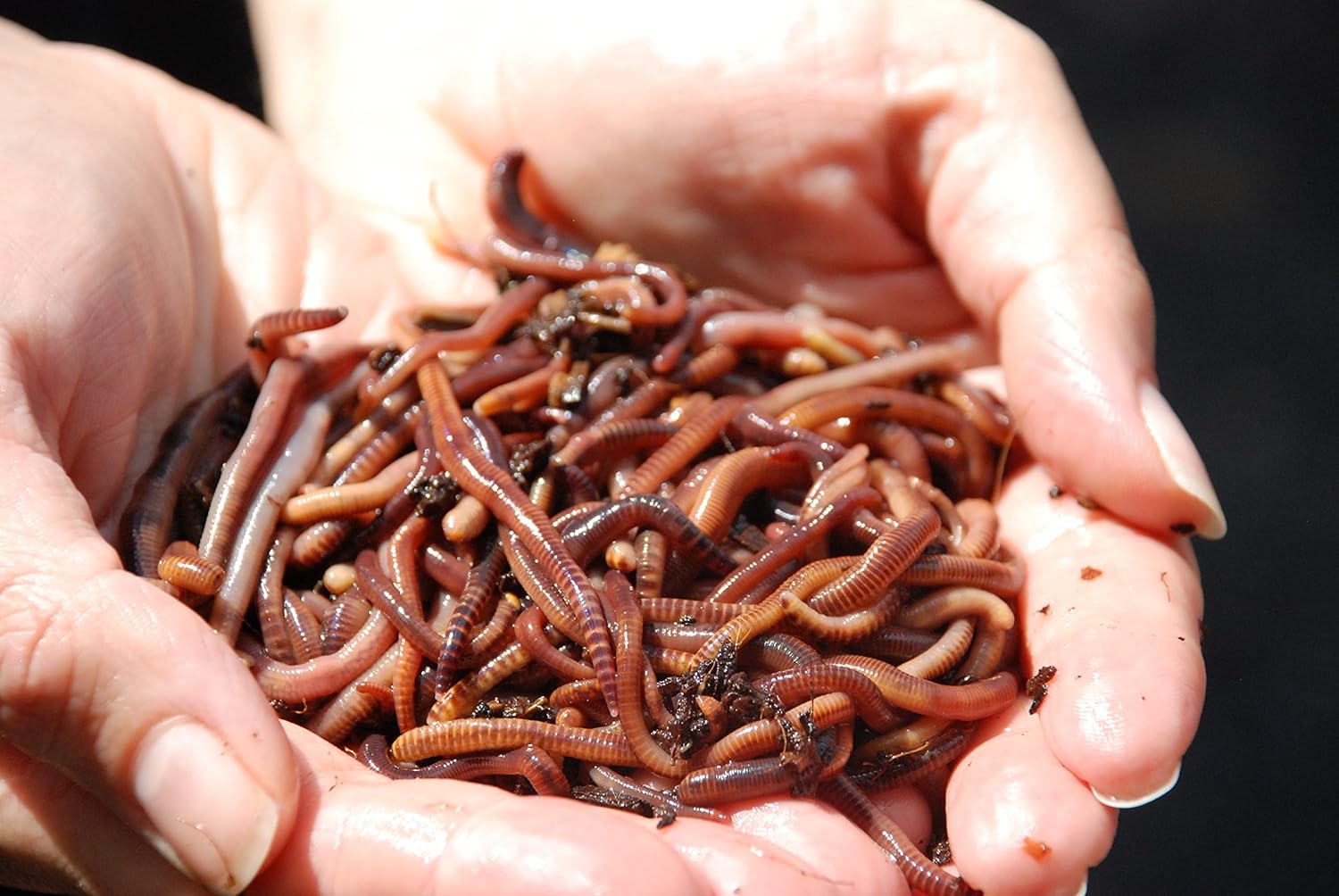

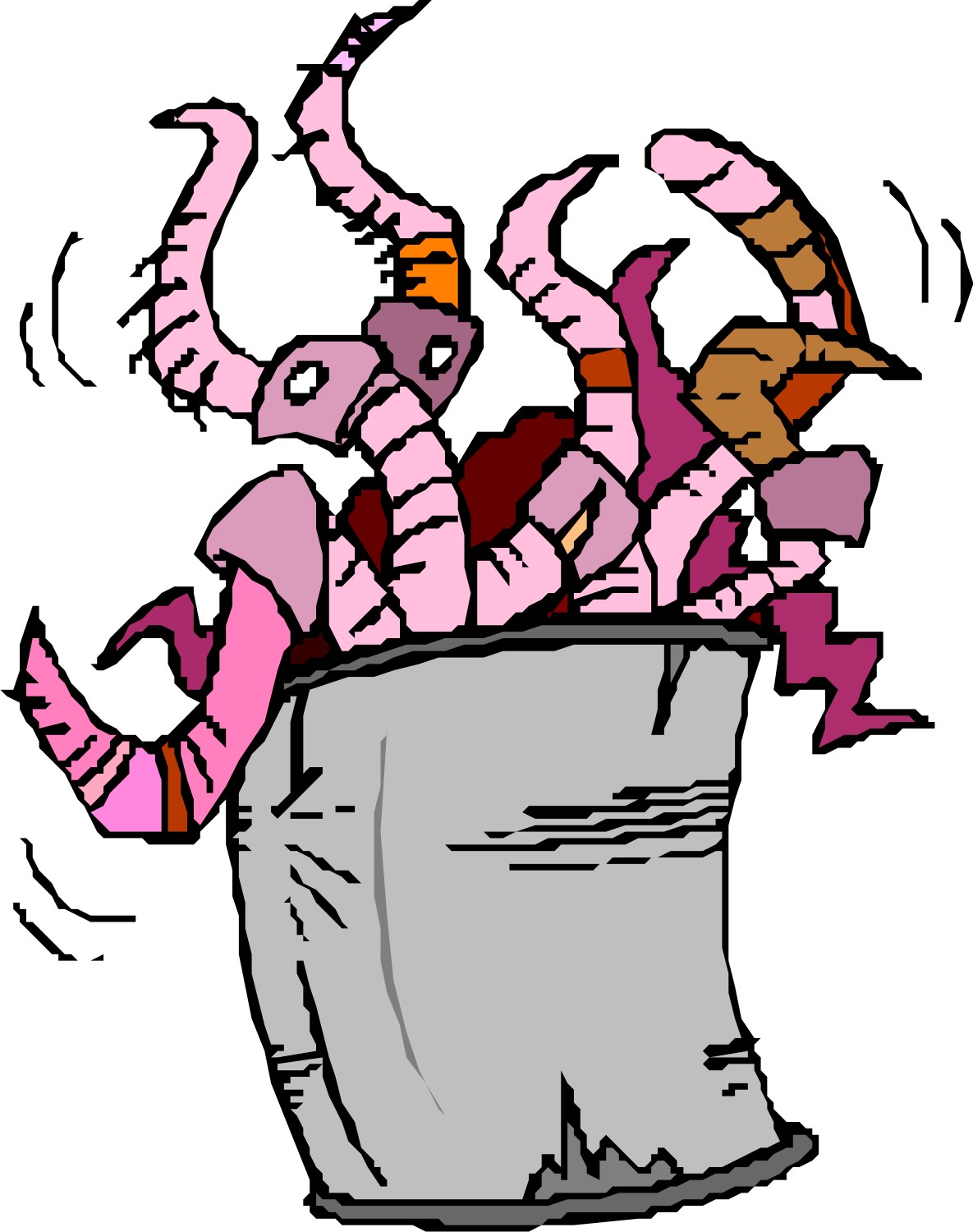
 Make sure your children wash their hands, too.
Make sure your children wash their hands, too.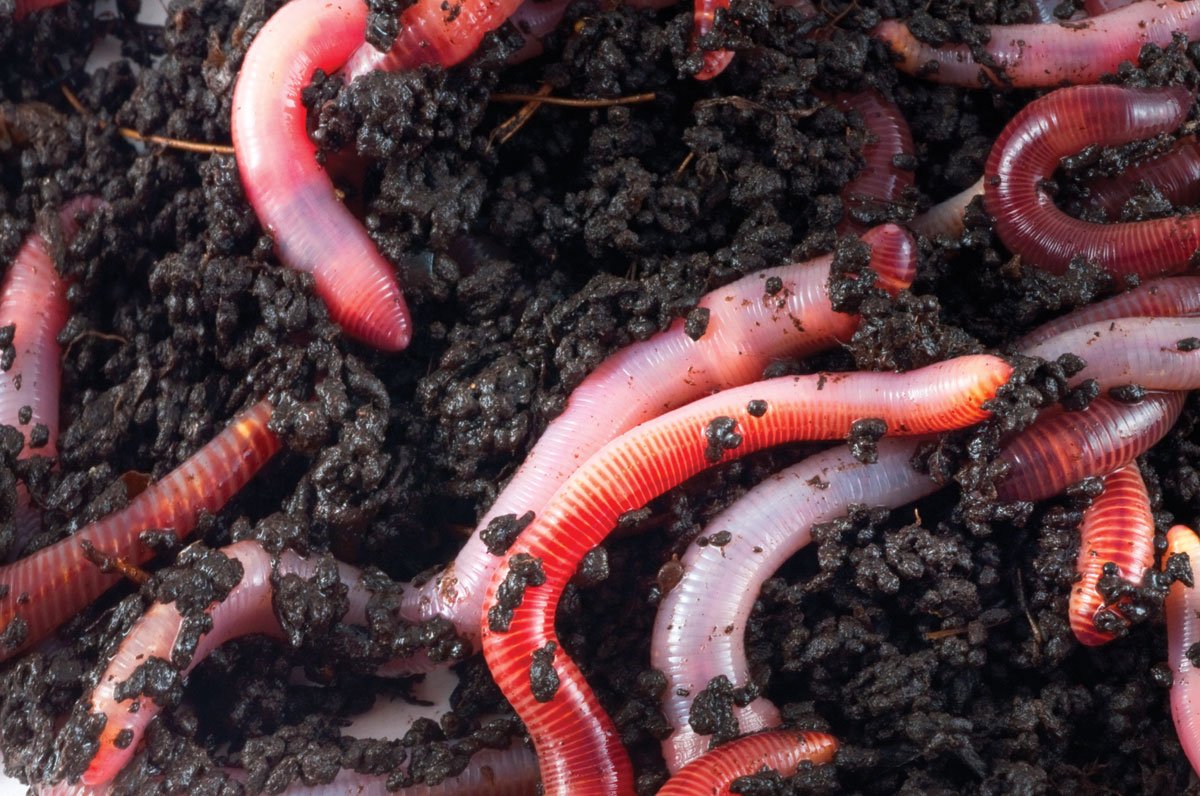
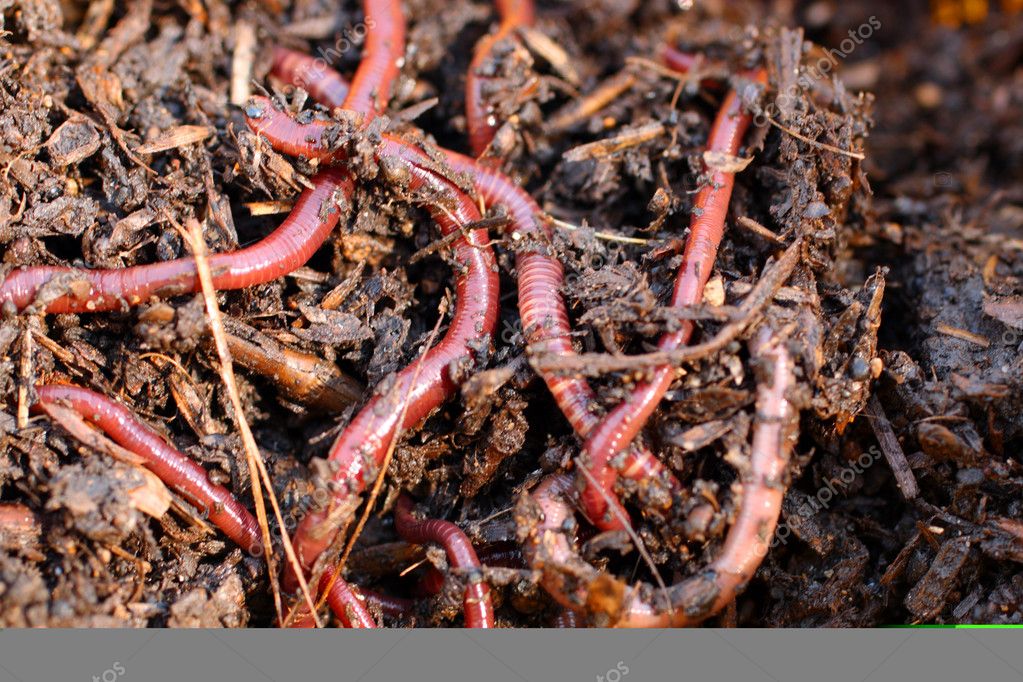
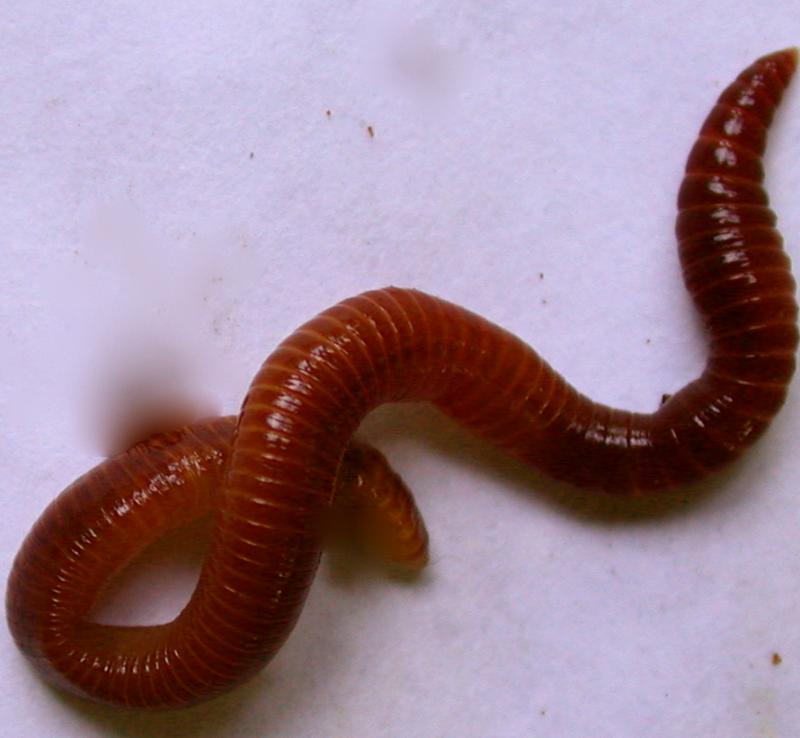 The eggs will stick to the tape.
The eggs will stick to the tape.
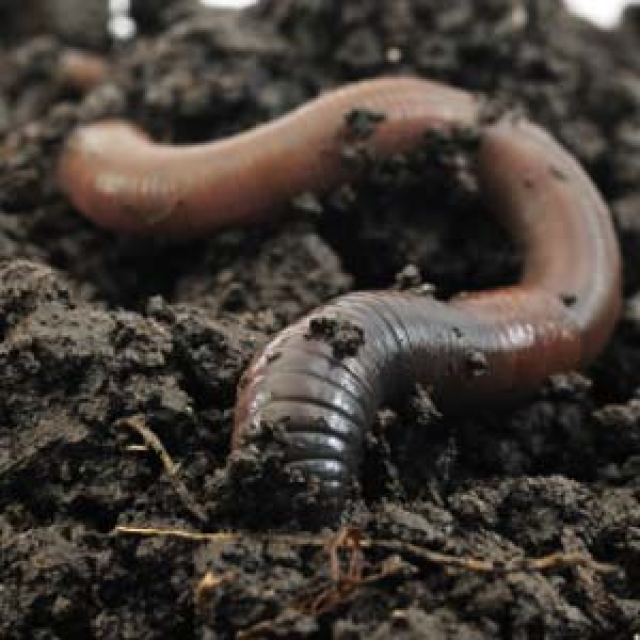 Make sure your children wash their hands, too.
Make sure your children wash their hands, too.
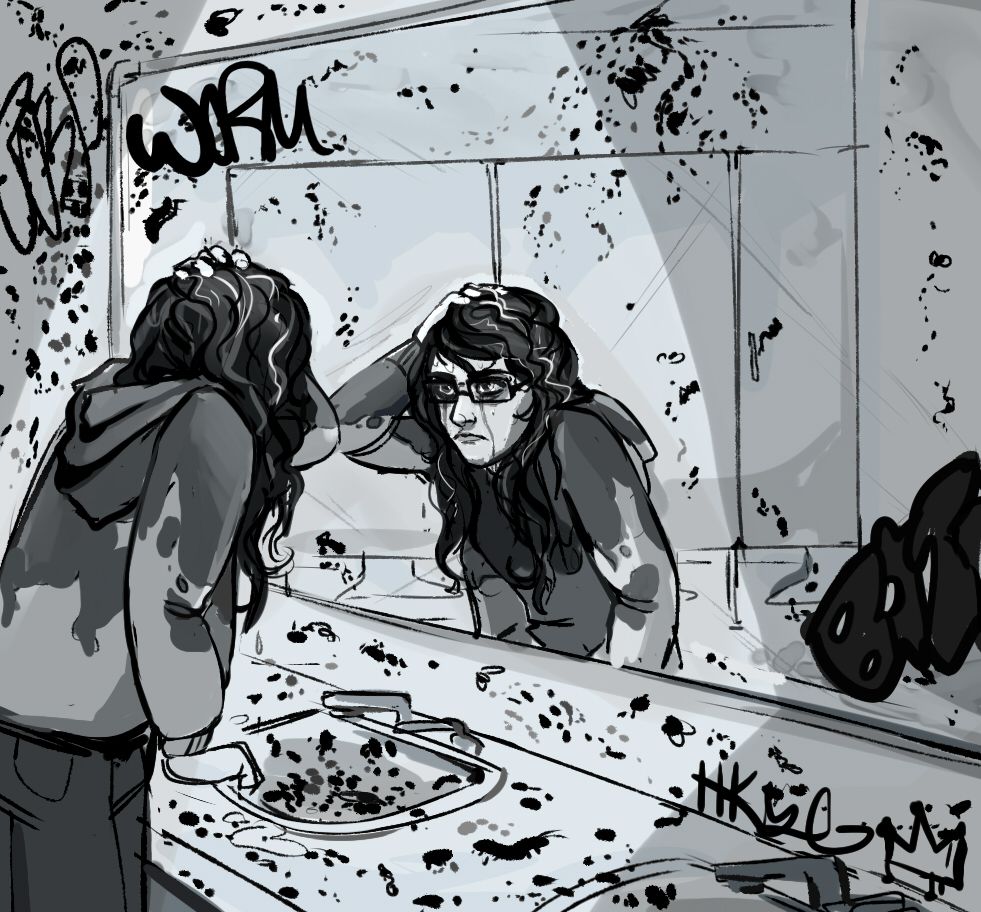 Also know what the side effects are.
Also know what the side effects are.
